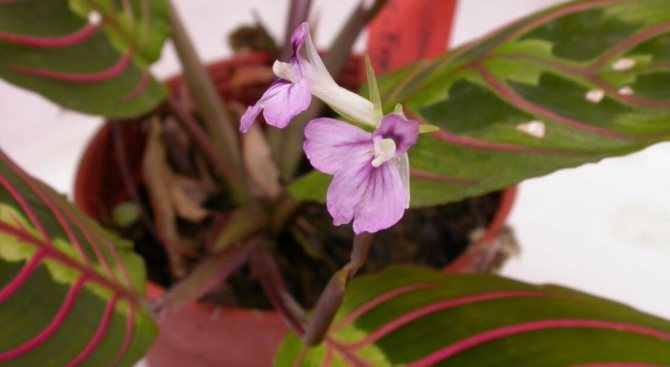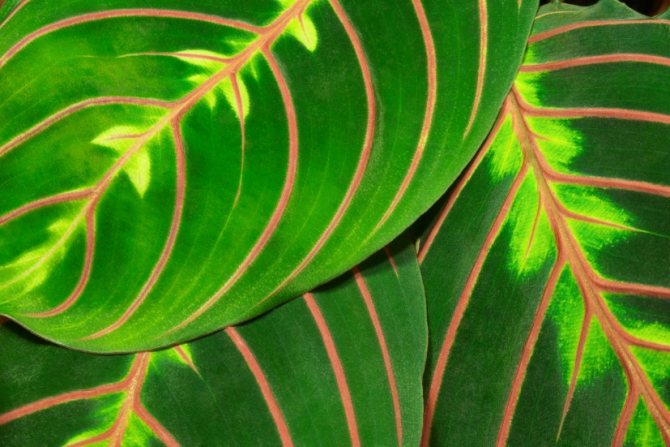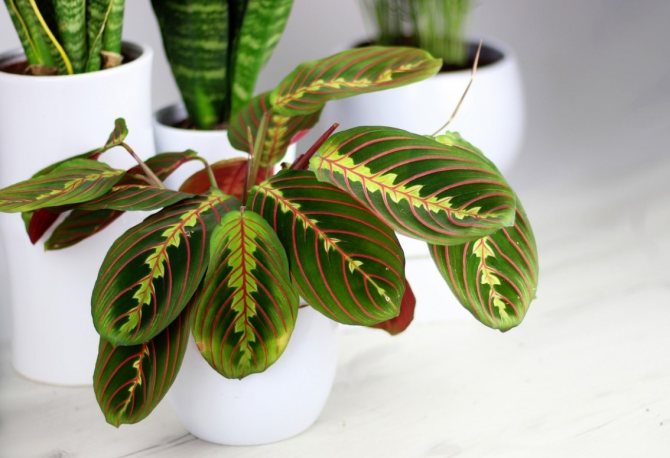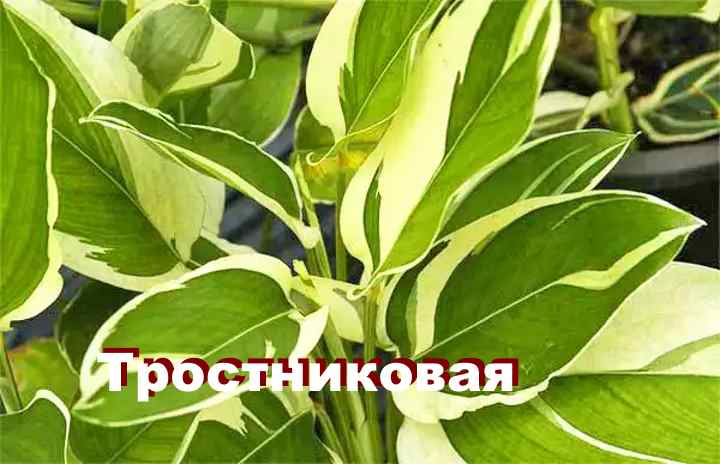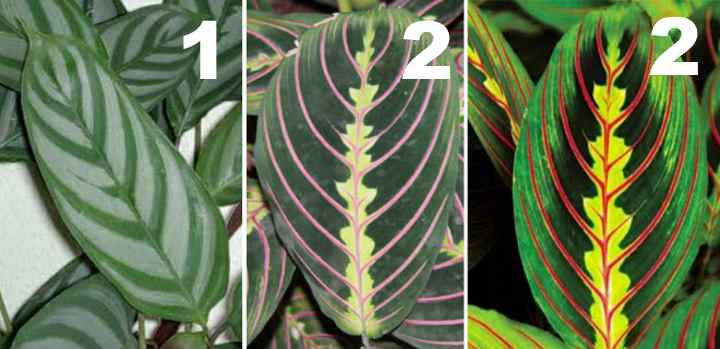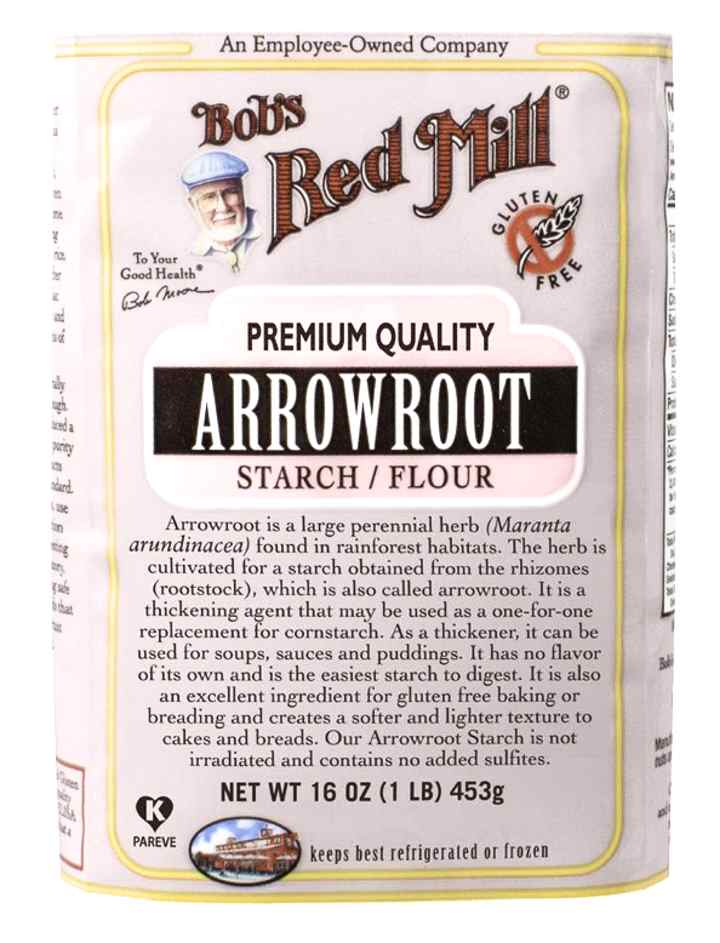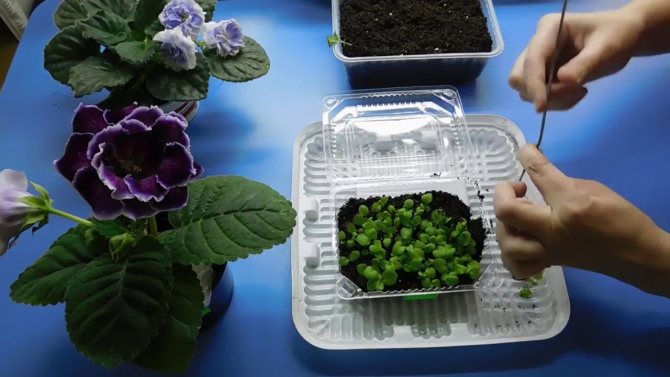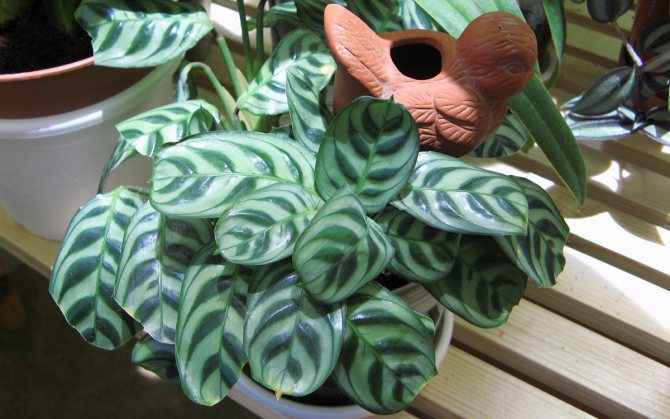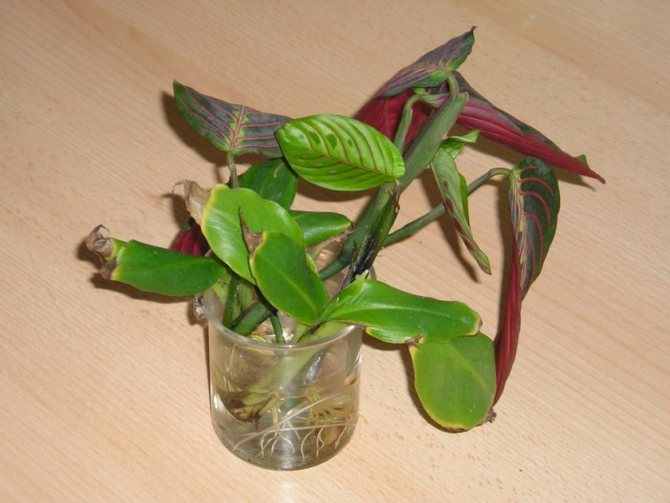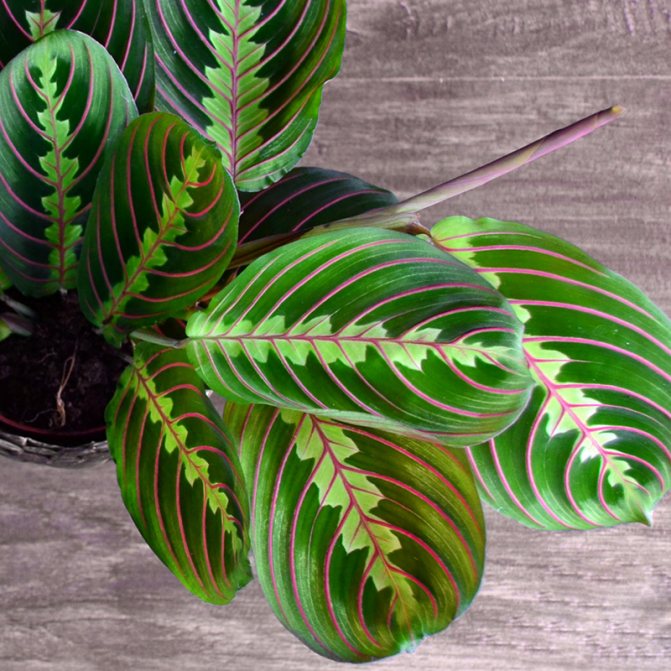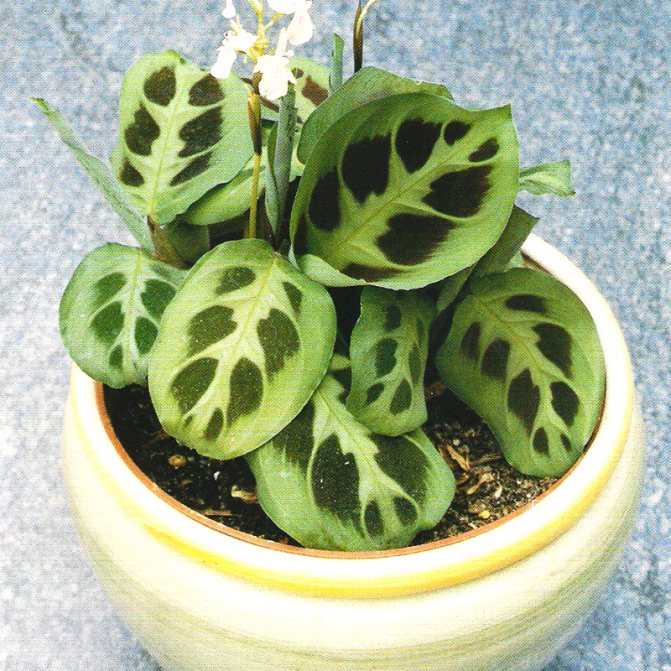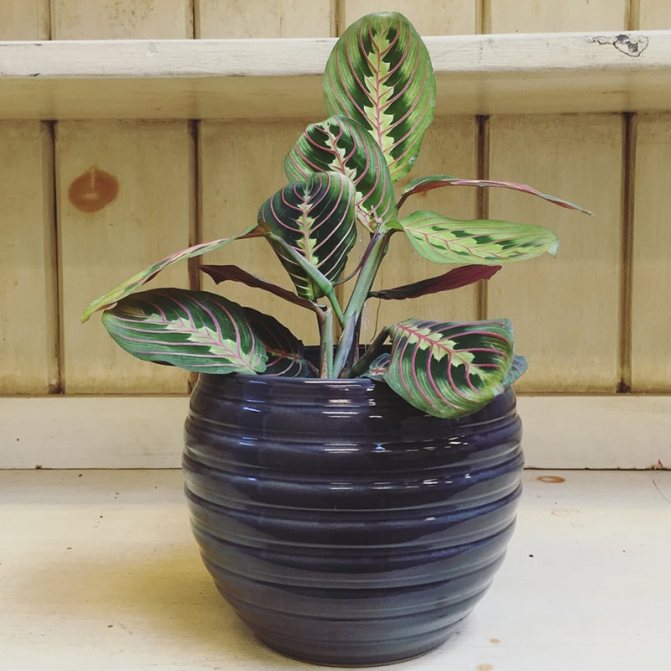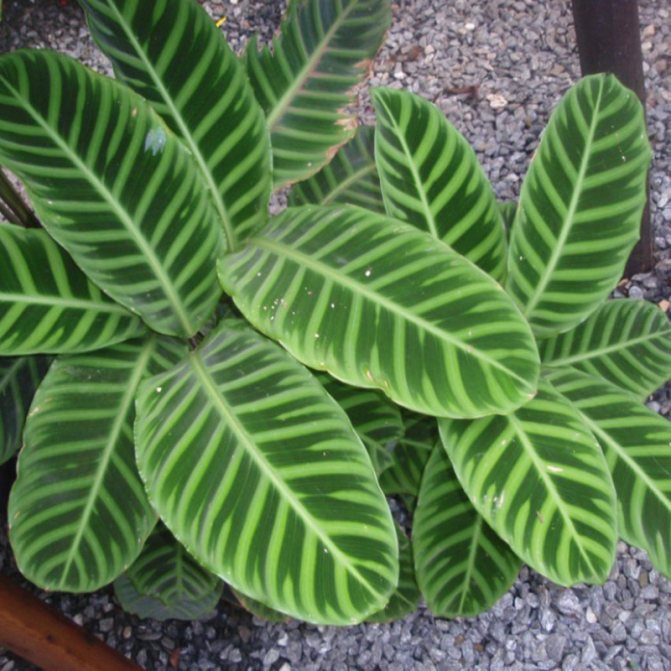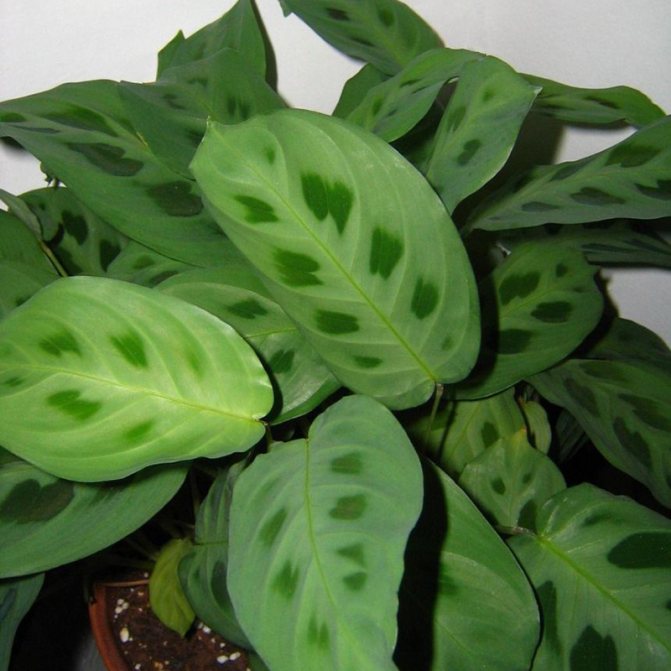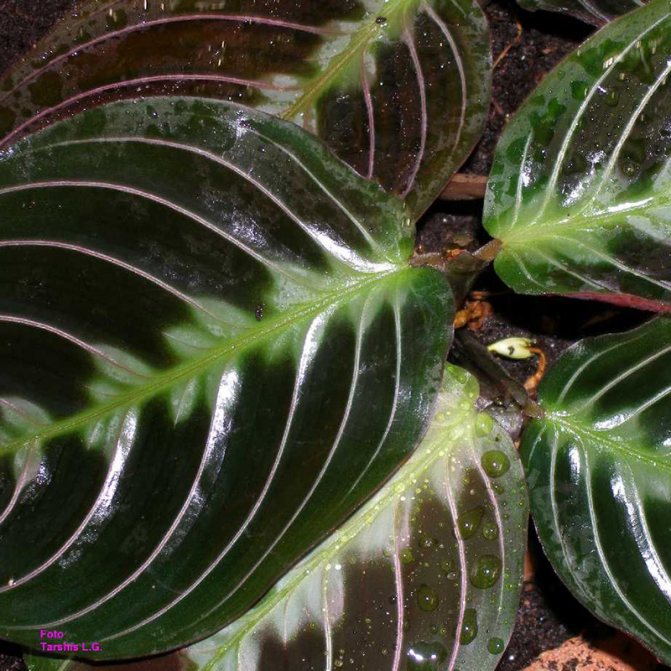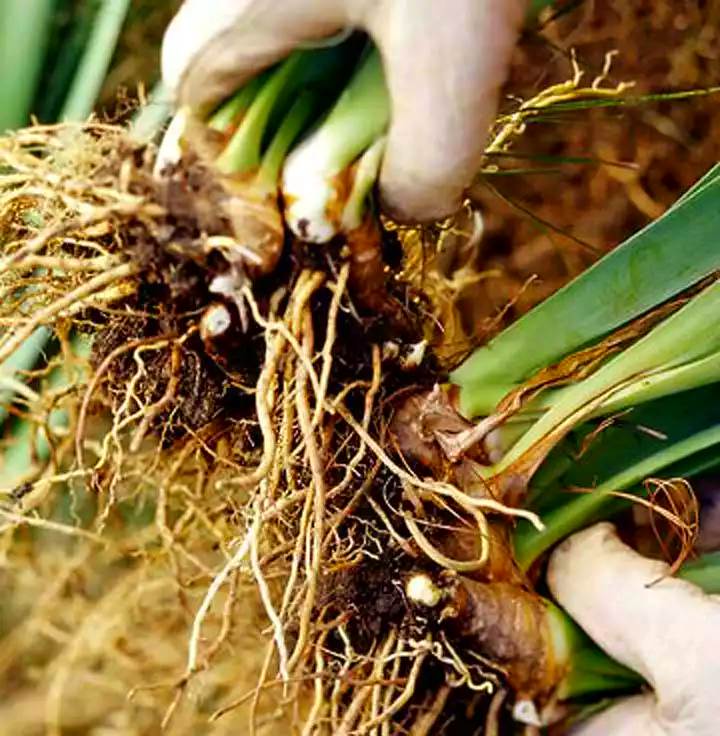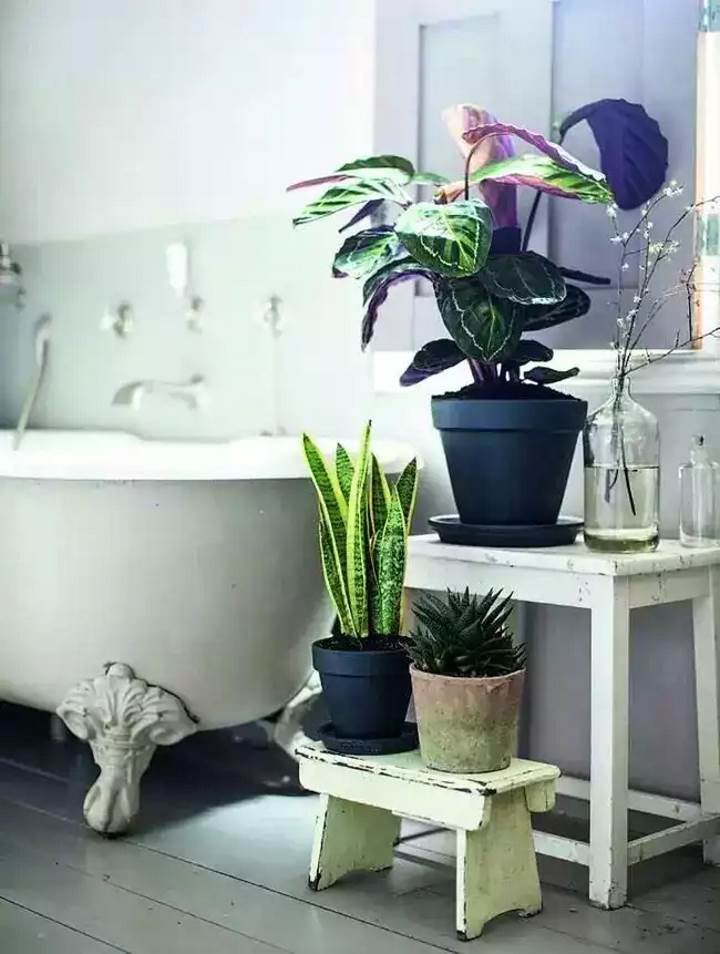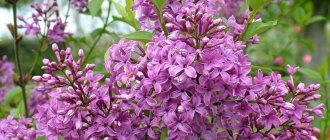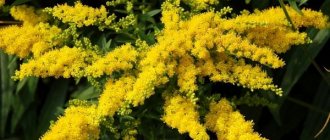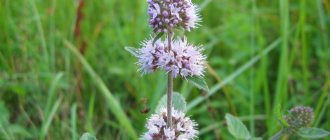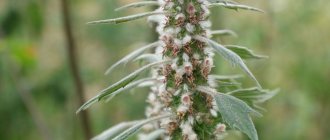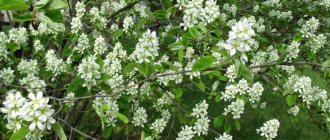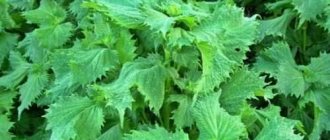Arrowroot is a beautiful plant with oblong leaves, which are distinguished by their original colors with contrasting stripes or spots. But, like any beauty, arrowroot has a rather capricious character. In addition, the plant has an interesting feature, for which it was nicknamed "praying grass". So, for example, under fairly comfortable conditions, the leaves of a flower are located almost horizontally to the surface, but immediately fold and rise up, as soon as they feel a lack of light or moisture.
From the point of view of aesthetics, arrowroot is undoubtedly a unique plant, but few people know that it is also actively used for culinary purposes. The roots of arrowroot have tuber-like thickenings that are edible. Almost 25% of the total weight of tubers is valuable food starch, which makes the plant a useful food product. Boiled tubers are used and a flour called arrowroot is made from them. The latter is actively used for baking bakery products and preparing all kinds of dishes.
According to its biological species, Maranta arundinacea or arrowroot reed is a small shrub-type plant that belongs to the family of the same name Marantovyh. The place of origin of arrowroot is considered to be South America, where it still grows successfully in the natural conditions of the rainy tropics and can often reach about one meter in height. Cultivated species of arrowroot are more modest in size and can grow in indoor conditions, for which they are very fond of amateur flower growers.
The Marantov family includes about 100 varieties and subspecies of this plant. But, perhaps, the most popular are arrowroot (Leuconeura) with white veins, Kerchoveana (Kerchoveana) with large brown specks, and Masange (Massangeana), which is distinguished by silvery veins on gray-green leaves. Also, domestic growers grow a number of other subspecies of arrowroot. Among them is a flower with red veins and yellow-green spots called Arrowroot red-veined and a rather rare plant with an interesting color called Arrowroot bicolor.
As already mentioned, the benefit of the plant lies in the great nutritional value of the tubers, namely in the starch of natural origin, which is found in them. But arrowroot also has more valuable properties, for example, it is believed that a flower placed at the head of the bed perfectly improves sleep. In addition, the plant is known for its unique ability to absorb negative energy, therefore it is recommended to plant this indoor flower where quarrels and negatives of various kinds often occur.
Arrowroot tricolor - a plant from the rainforest
Like most of the tribesmen belonging to the Marantovaya family, Maranta leuconeura erythroneura is a spectacular ornamental deciduous plant that lives in nature under the canopy of a tropical forest and pleases lovers of such crops with a cap of painted leaves throughout the year.
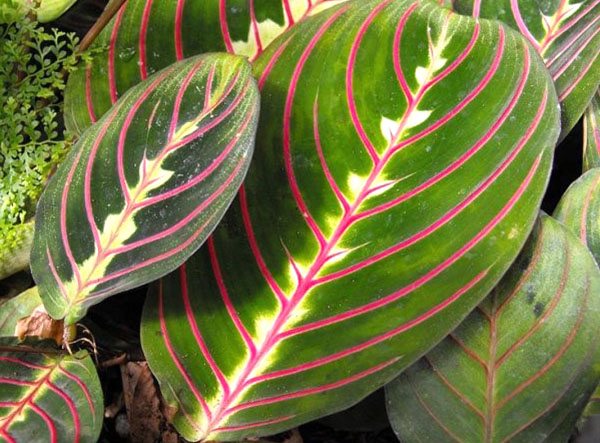
But why is the tricolor arrowroot shown in the photo - a prayer plant? The point is in the unusual abilities of culture, which responds to changes in external conditions by raising, as if in prayer, folded sheet plates.
The wild arrowroot tricolor is an indigenous inhabitant of a rather moist shady undergrowth. And this feature of the leaves is very useful if the plant falls under the rays of the scorching southern sun for a long time, or a dry period sets in.
Moisture evaporates from the raised leaves much less, and sunburn is not so terrible. But finding itself in comfortable conditions, the flower lowers the foliage, and everyone around them manages to admire the bright ornament that combines all shades of green, white-yellow and crimson colors.
General information about the arrowroot plant
Origin
The Indians endow this plant with medicinal properties. Its rhizomes serve as an antidote to areas affected by poisoned arrows.
Arrowroot in European countries appeared thanks to Houston... It was this American leader who brought the seeds of the plant to the continent. In southern America, he planted entire fields of flower.
In cooking
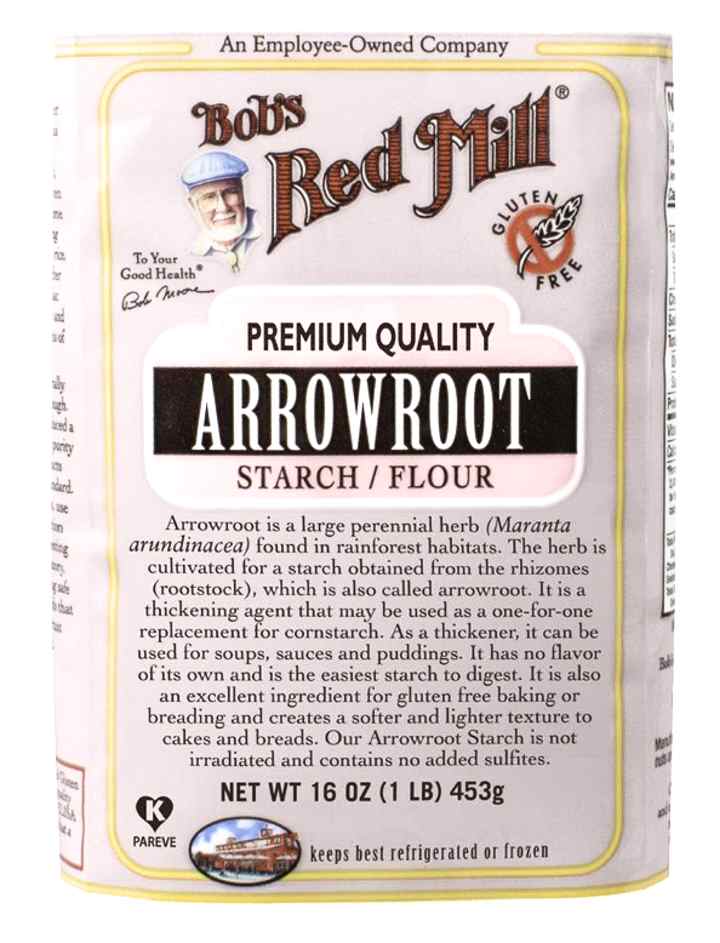

An interesting fact is that the roots of the plant are used to make arrowroot starch.
True, only a reed plant. This starch is special, used for making sauces, jellies, puddings and even soups.
Appearance
Arrowroot is a perennial of small stature, belonging to the Marantovye family.
The root of the flower is tuberous. Homeland - moist Brazilian forests.
Archaeologists excavated and found that during the period 3000 BC. arrowroot was grown by Indian tribes.
Leaves. Indoor varieties usually have small leaves, but they are quite attractive. Their hue ranges from light to rich dark green tones. On the leaves there are dots, veins, bright and beautiful spots.
Related article: Divala annual - useful properties, description
Stems. At the beginning of growth, the stems of the flower stretch upward, but as soon as the plant grows up, it begins to creep.
Flowers. The color appears either in late spring or summer. A big plus of arrowroots is its hypoallergenicity. People with allergies can afford this flower. The flowers themselves are spike-shaped and asymmetrical inflorescences. As soon as the flowering period ends, a box appears with one seed inside.
Healing properties... The flowers of the plant are medicinal. They can be used to strengthen the body, treat and prevent vein disease.
Root serves as a product for the preparation of dietary baby food. The great advantage of arrowroot is in the absence of contraindications to its use.
In total, there are about 25 varieties of arrowroot. Photos of each of them are on the Internet. Several varieties are cultivated for growing at home, for example:
1 view. Arrowroot arrowroot
This species is characterized by leaves in the shape of a green heart with beautiful patterns and silvery veins. The bush itself is low and picky. It multiplies easily.
2 view. Arrowroot tricolor
It is also called the herring ridge. The most common flower among arrowroots and very showy.
Leaves are small, oval. It got its name from the color gamut of the leaf, where the center is decorated with green-yellow spots, and the sides look like patterns in the form of feathers.
The surface itself is velvety with red veins. Below the leaf is crimson, and the veins are pink. Arrowroot fascinator is also similar to the tricolor.
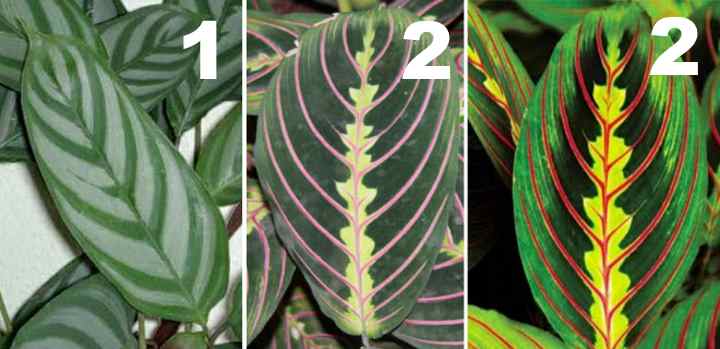

It is the three-flower that is called the prayer flower. The leaves of a plant react to color in a very unusual way - if there is a lack of it, they close and resemble a rosette, but with sufficient illumination, the leaves are arranged horizontally and open.
If the plant is about to sleep, the same thing happens. At night, the flower rolls up, and in the morning it wakes up and opens up.
Botanists explain this phenomenon by the fact that on the leaves of the plant there are pads filled with moisture. It is they who produce such movements that are undoubtedly very beautiful.
Reed arrowroot
Of the arrowroot, this is the highest. Reaches up to 1.3 m in height.The leaves are long, dark in color with a bluish sheen.
Arrowroot-bicolor or bicolor
It is also common and grows at home. The leaves are slightly wavy at the edges. Their color is dark green with brown spots. Below the leaves are red. This variety does not tuber.
The most hardy and shortest arrowroot with bright green leaves and dark patterns, feathers and peas. The central part is highlighted with a white stripe, and the lower one is colored blue or red. People called this species a frog.
Conditions for keeping arrowroot tricolor
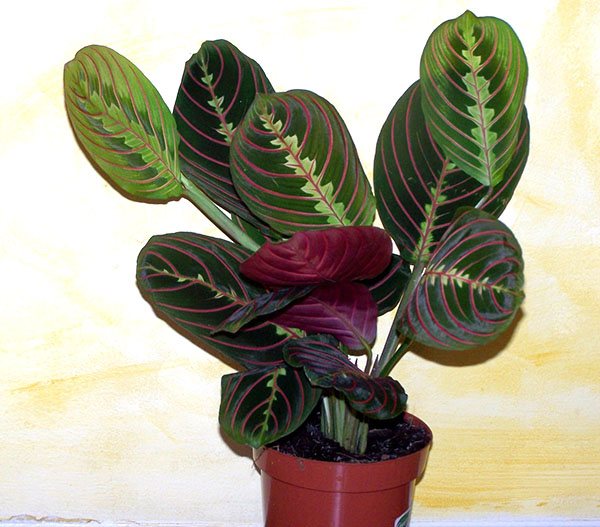

Attracted by the beauty of the tricolor arrowroot, flower growers should remember that this decorative native of the tropics needs special conditions for active growth and well-being. First of all, this concerns the location of the flower.
If most indoor crops claim well-lit areas of the windowsill, then arrowroot is better to take the corner away from direct sunlight, but in dense shade, where the leaves will lose their brightness and acquire a grayish tint. In the summer, the arrowroot tricolor, as in the photo, has enough natural light, but from mid-autumn it is better for the florist to take care of additional lighting.
Arrowroot needs warmth and moisture. Drying out the soil in a pot, like staying in a cold room, is a serious risk for a plant that is accustomed to something completely different in nature.
The combination of cold and excessive moisture of the substrate is especially dangerous. The coolness is perceived by the arrowroot tricolor as the beginning of a dormant period, so the plant reduces its moisture and nutrient intake. With an excess of non-consumed and poorly evaporated moisture in the soil, harmful microorganisms multiply, putrefactive processes develop on the roots.
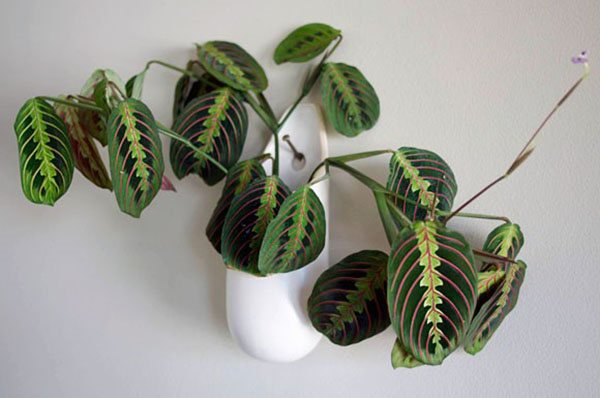

Plants of the rainforest not only relate well to moisture in the soil, but also cannot exist in the dry air of apartments. To provide a prayer plant or arrowroot tricolor, as in the photo, complete comfort, you will have to take care:
- about frequent irrigation of the crop;
- maintaining high humidity using all available means;
- about protecting the flower from hot air from heating radiators or cold drafts.
The culture feels best when it is in a home greenhouse. But caring for a bright native of the tropics does not end with the creation of acceptable conditions of detention.
1. Seven Secrets of Success:
| 1. Growing temperature: Can be grown throughout the year at normal room temperatures ranging from 18 to 21 degrees Celsius. Do not expose the plant to temperatures above 25 degrees Celsius and below 12. |
| 2. Lighting: the brighter the arrowroot leaves are, the more sunlight it needs. To maintain an attractive bright appearance, plants should be sunbathing in the morning and evening, but should be protected from the scorching rays of the sun during the day. |
| 3. Watering and humidity: during the period of active growth, supporting the soil is evenly moist, but not swampy. In autumn and winter, between waterings, the upper layer of the substrate is dried with a thickness of 2 - 3 cm. The air humidity is high. |
| 4. Pruning: maintain an attractive and compact plant appearance with formative pruning. Sanitary pruning, as needed, removes any old, yellowed leaves to prevent pests and fungal diseases. |
| 5. Priming: for growing arrowroot, acidic or neutral soil with a sufficiently high content of nutrients is suitable, perfectly allowing moisture and air to the roots of plants. |
| 6. Top dressing: from spring to autumn, plants need regular fertilization, which is carried out every 2 weeks. In the winter months, the frequency of feeding is reduced to once a month or not at all. |
| 7. Reproduction: dividing large plants during transplantation, rooting of apical cuttings, separating small nodules that are in the root system, growing from seeds. |
Botanical name: Maranta.
Arrowroot flower - family... Arrowroot.
Homeland of the plant... The plant originates from Brazil. In its homeland, it grows in tropical areas with very humid, often swampy soil.
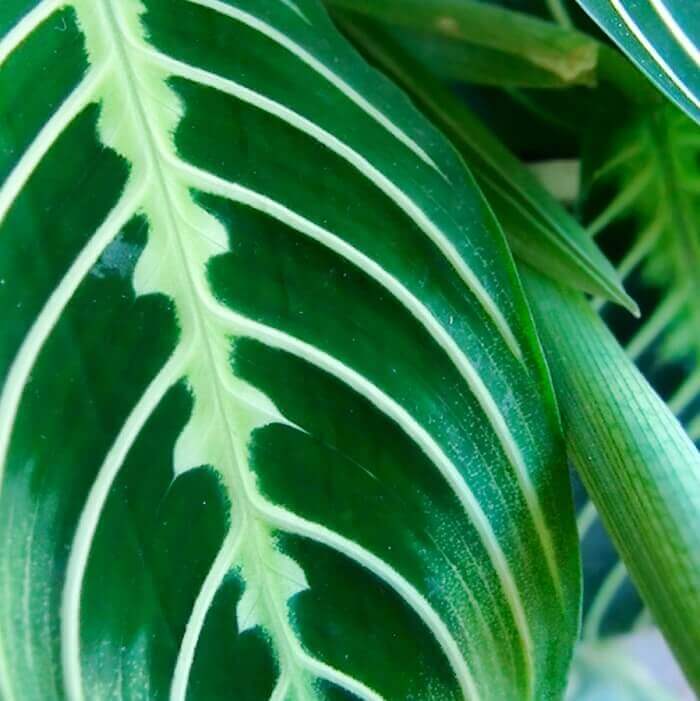

Description. Small genus "Arrowroot“, Consists of about 20 species of evergreen, herbaceous, perennial plants.
Leaves up to 13 cm long, oval or oblong-lanceolate, have a very wide variety of colors, are located on long petioles, often emerging directly from the ground. The underside of the leaf blade is often pink, burgundy, or purple. At night, the leaves fold, in connection with which the second name of arrowroot appeared - a prayer plant.
With age, plants form low stems.
With good care, arrowroot or prayer flower blooms in small white or lilac flowershowever, they are of little interest.
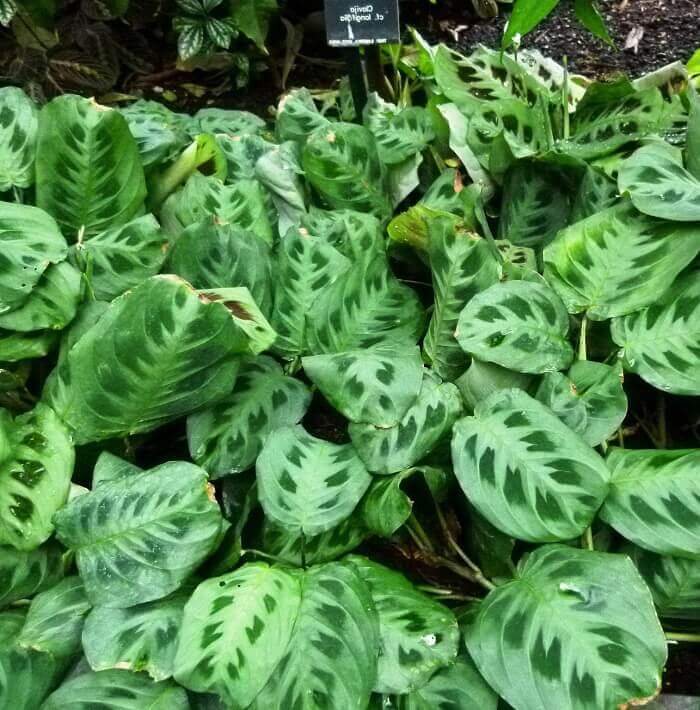

Height... Rarely exceeds 30 - 40 cm. in height, plants develop slowly and in a year with good care they throw out only 5 - 6 leaves.
In nature, the height of some specimens can reach 2 m.
Caring for arrowroot tricolor at home
Due to the complexity of fulfilling all the requirements of arrowroot, flower growers consider this culture to be capricious. But if you find an approach to the flower, it will respond with rapid growth, the constant appearance of all new tricolor foliage and even flowering.
Compared to the leaves of the arrowroot prayer plant, the tricolor photo of its flowers does not cause a storm of admiration. Some growers do not even suspect that their favorite forms spike-shaped sparse inflorescences with whitish or lilac small flowers towering above the rosette of leaves.
The tricolor arrowroot care at home must include:
- watering;
- plant feeding in spring and summer;
- spring transplants carried out at two-year intervals;
- hygienic processing of foliage from dust and removal of dead or damaged parts of the plant;
- maintaining air humidity.
Watering should be regular and abundant, and it is useful to use soft water at room temperature. The substrate should dry out a little between waterings. In the summer and when the heating is running in winter, the soil is moistened more often. If the room is cool, the irrigation schedule is adjusted.
3. Varieties of arrowroot:
3.1. Maranta tricolor, tricolor or fascinator - Maranta tricolor
A small herbaceous plant - a subspecies of variegated red-tipped arrowroot, with very attractive bright, oval leaves. The main tone of the leaves is dark green, velvety, the surface of the leaf plates near the central vein has a light green or even yellow tint, the lateral semicircular veins are highlighted with thin pink lines, and the lower surface of the leaves is often painted in a burgundy shade.
↑ Up,
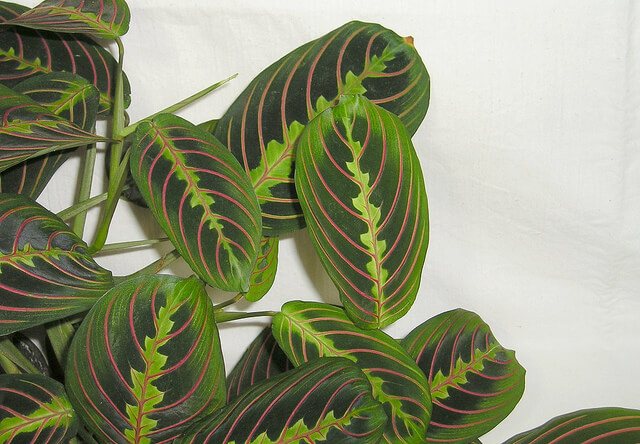

3.2 White-necked arrowroot - Maranta leuconeura
Valuable decorative leafy, compact plant with large, painted leaves of all shades of green with a regular geometric pattern. As the name suggests, the veins are often highlighted with a white tint. The underside of the sheet plates can be painted either in a lighter shade - for example, a silvery shade, or in a contrasting burgundy color. The bloom is unattractive.
↑ Up,
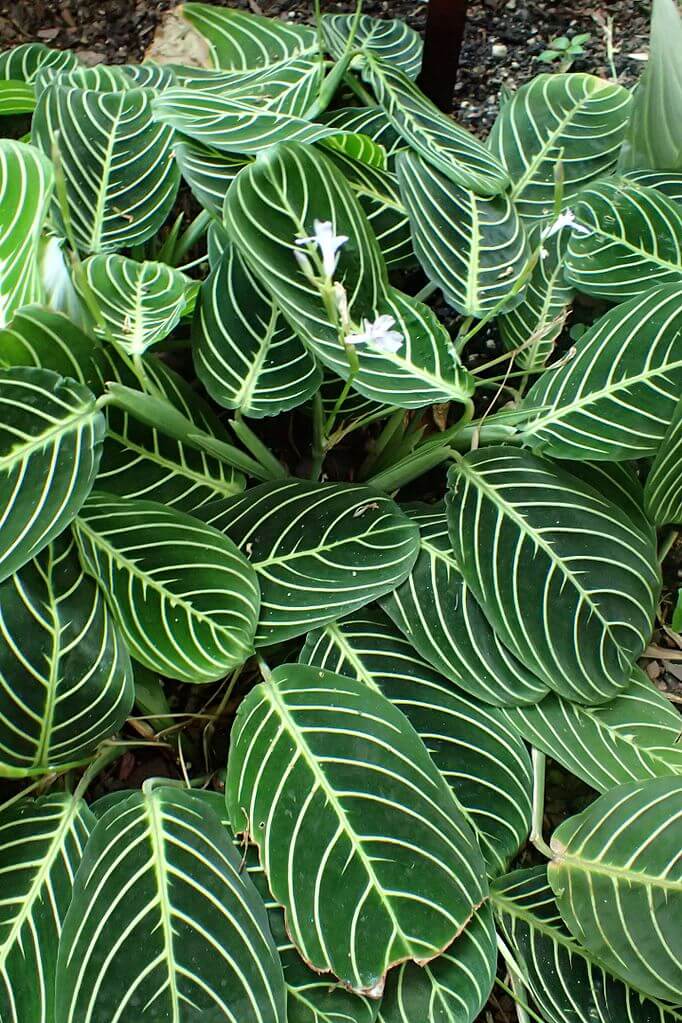

3.3. White-necked arrowroot "Kerhovena" - Maranta leuconeura Kerchoveana
Evergreen white-streaked arrowroot 30 - 45 cm high with lodging stems. Leaves are oblong - oval, bluish - green, arranged alternately. Large brown or dark green spots are located on the surface of the leaf blades. The flowers are white, inconspicuous.
You may also be interested in:
- Alstroemeria - flower photo, planting and care, growing in the open field and at home, description, varieties, soil composition for keeping home alstroemeria in a pot
- Rejuvenated - photo, planting and care in the open field, varieties of a stone rose, growing a flower at home, flowering time of a plant, composition of soil for keeping in a pot, description of a plant
- Saintpaulia - photo, violet varieties, home care, plant propagation, soil for growing indoor flowers, diseases and pests, transplantation, fertilization, watering
- Verbena - photo of a flower, planting and care in the open field, growing seedlings, a plant in a flower bed, medicinal properties, description, content in a pot and in a pots, height
- Monarda - photo, planting and care in the open field, medicinal properties of a flower, description of a plant, growing from seeds, use of essential oil, varieties, caring for a perennial at home, flowering time
↑ Up,
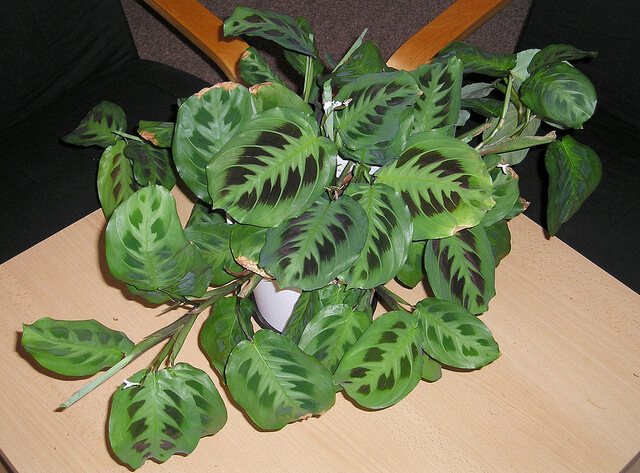

3.4. Black Maranta Massange - Maranta leuconeura "Massangeana"
Beautiful, but very fastidious bush type. Large oval leaves are painted in a mint shade near the central vein, around this light spot there is a dark brown - almost black stripe. The outer edge of the leaf plates is painted in a bluish-green hue, along which there are light stripes along the veins.
Home care
Caring for arrowroot at home is no different from most other plants.
When buying, you should carefully examine the plant, refusing to purchase strongly overgrown, old or, conversely, young, not yet gaining strength, as well as weakened seedlings.
Having delivered the arrowroot home, it should be protected from the harmful effects of dry room air. For this purpose, the plant sprayed with standing warm water from a spray bottle several times a day until it adapts to new conditions for it.
By the way, such hydro-procedures are necessary for a flower throughout the entire period of its growing season: in winter at least one, and in summer - twice a day.
Varieties (species) arrowroot
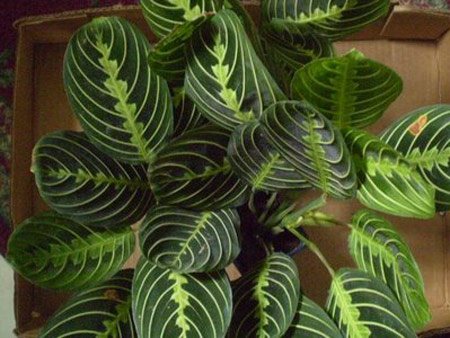

maranta massageana
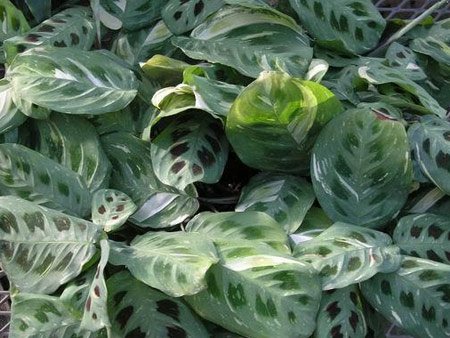

maranta leuconeura variegated
You can come across such scenic varieties as Maranta Leuconeura var. erythrophylla, also called "Tricolor" due to the presence of various shades in the color of the same satin dark green leaf with prominent red veins and irregularly shaped yellow-green spots located along the midvein.
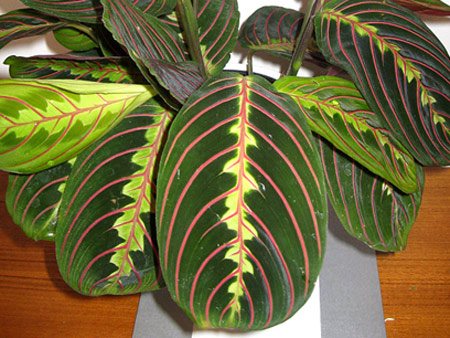

maranta tricolor
Maranta Leuconeura var. kerchoveana with pale green foliage covered with brown violet-brown spots of irregular shape on either side of the midrib - gave it the name "rabbit tracks", less effective than the previous ones, but, nevertheless, very popular.
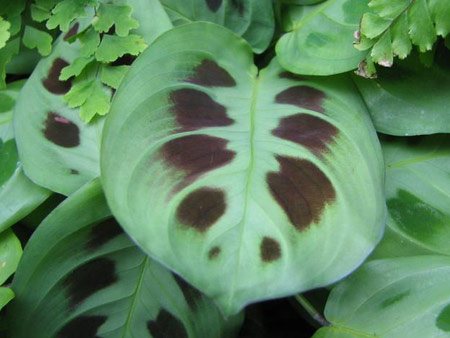

maranta kerchoveana
Watering and spraying
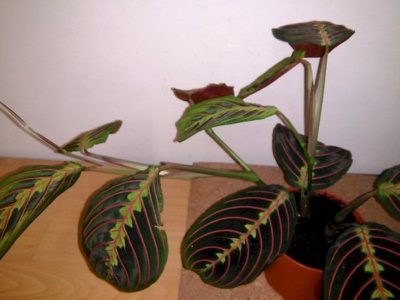

Arrowroot requires abundant and regular watering, which does not allow excessive drying of the soil. However, excessive moisture in the substrate can be detrimental to the plant, as it leads to decay of the root collar.
Usually in the summer, watering is carried out in one day, and in winter - 1-2 times a week. For this procedure, only rain, snow, tap boiled or settled water is used.
Drying of the surface layer of the earth to a depth is a reliable indicator of the need for regular irrigation. 2 cm.
Spraying also has a beneficial effect on the plant, especially in summer.
Arrowroot (maranta) - decorative leafy houseplant, belongs to the arrowroot family. The family includes about 25 species of plants, mainly herbaceous and undersized. Under natural conditions, arrowroots grow in the swampy forests of Central and South America.
Arrowroots, like calatheas and ktenants, are attractive for their unusual color of leaves. Arrowroot leaves are elongated-elliptical or oval in shape with a spectacular color of leaf plates.Dark green stripes alternate with pink or light salad, red-brown velvety spots emphasize light green veins on arrowroot leaves.
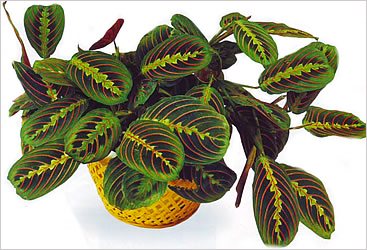

These decorative deciduous perennial houseplants have an interesting feature: arrowroot leaf blades have the ability to change their direction depending on the lighting: under favorable conditions they are located almost horizontally, and with a lack of lighting in the evening they rise up and fold together. Because of this feature, arrowroot is called "praying grass". The flowers are usually small, white, collected in panicle inflorescences. On the roots of arrowroot there are tuberous thickenings.
Arrowroot is quite a shade-loving flower, it goes well with other ornamental plants, therefore it is often used for interior decoration, grown in winter gardens.
Views:
Kerkhoven's arrowroot (Maranta leuconeura var. Kerchoveana) - leaves on the lower side are gray-green, and on the upper side - bright green with velvety brown or dark green spots;
Masanzha (M. leuconeura var. Massangeana E. Morr.) - Leaves are similar to diff. Kerhoven, but the spots are olive brown.
Arrowroot tricolor or red-veined (Maranta tricolor) - leaves with light small spots along the central vein and spectacular arched bright red veins on the upper side, and purple on the bottom.
White-necked arrowroot (Maranta leuconeura E. Morren). Leaves are rounded-elliptical, 10-15 cm long and 5-9 cm wide, heart-shaped at the base, dark green above, with a silvery stripe in the middle, silvery-white lateral veins and light green colored patterns, bluish-green and reddish below ...
Reed arrowroot (M. arundinacea L.). Grows in tropical rainforests in Central and South America. Compact shrub 0.6-1.2 m tall (stems dry out in winter), with thick tuberous roots. The leaves are long (up to 25 cm in length), ovate, pointed to the apex, pubescent below, dark green with a bluish tinge. The flowers are white.
Arrowroot care
Arrowroot is a rather capricious plant, but it is not difficult to take care of it correctly. It must be remembered that since arrowroot comes from the tropical forests of Brazil, it will be close to natural for it twilight, warmth and high humidity. This plant is perfect for apartments with north-facing windows.
Illumination. The best place in an apartment for arrowroot is the northern windows, in extreme cases, east or west. Since this indoor flower loves diffused light and can be kept in light shade, it can be placed on a table or cabinet near the south window. In bright light, arrowroot leaves fade. Arrowroot grows well under artificial lighting. To choose the perfect place for a flower, observe the arrowroot leaves - she herself will tell you whether she is comfortable or not. Arrowroot leaves are very mobile, in normal daylight they are placed horizontally, and with an excess of sun, the plant will lower the leaves to the bottom almost vertically.
Temperature.In winter, the temperature should not drop below 17 degrees; in summer, the sun should not bake this gentle grassy princess. The optimum temperature for summer is 22-24 ° С; Soil temperature is not lower than 18 ° C. The flower should not stand on a cold windowsill. Arrowroot does not like drafts.
Humidity. Arrowroot prefers high humidity. Regular spraying is required throughout the year. Spray with well-settled or filtered water. The roots are often covered with moist moss.
Air humidity for all houseplants of the arrowroot family is very important. With insufficient air humidity, the tips of the leaves dry out. In indoor conditions, arrowroot grows better not alone, but among other potted plants. It is good to place this beautiful flower next to an aquarium or other moisture source.
In the summer, you can take the flower out into the fresh air, but the place should be shaded. Arrowroot grows well in summer on sheltered balconies and terraces in damp and rainy climates.
Watering. Water abundantly with warm soft water. The soil should be kept moist, but care should be taken to prevent waterlogging and cooling of the root system. In autumn and winter, watering is somewhat reduced.
The arrowroots are transplanted on average after two years, in the spring, while the pot is taken shallow and only slightly larger than the previous one. The root system of plants is shallow. Good drainage is essential, consisting of expanded clay, shards or coarse sand. Arrowroot loves moisture, but stagnant water in the pot leads to root rot.
The soil. The arrowroot soil prefers slightly acidic (pH about 6). A composition of leaf, peat soil and humus in equal proportions or from garden soil, peat and sand (3: 2: 1) is recommended. You can add a little coniferous earth to this mixture. Crushed charcoal will not harm either.
Top dressing. Houseplants of the arrowroot family do not like excess fertilizer in the soil. Therefore, it is better to apply fertilizers of very low concentration, dilute liquid fertilizers with twice the amount of water than in the instructions. Apply 2 times a month, in the autumn-winter period - 1 time per month, it is better not immediately after watering. With an excess of fertilizer, arrowroot can shed its leaves.
Reproduction The plant propagates easily, or by cuttings. You can propagate arrowroot by apical cuttings or by dividing the bush. In late spring (or summer), cuttings with 2 - 3 leaves from new shoots of the plant should be cut and placed in water. After five to six weeks, the cuttings take root. Can be rooted in home greenhouses with high temperature and humidity.
Pests Arrowroot is affected by spider mites, which can appear when the indoor air is too dry. Therefore, in order to prevent, once a week, thoroughly wash the back of the leaves under a warm shower. And leave the plant in the bathroom overnight.
- <Back
- Forward>
Landing
When planting a plant is best suited shallow but wide ceramic or plastic pot. This is due to the fact that arrowroot roots do not penetrate deep into the soil, but they form additional underground tubers that require sufficient free space for their development.
To grow healthy and beautiful indoor plants, it is worth preparing a balanced, breathable substrate that has a slightly acidic reaction of the environment.
As the latter, either ready-made store formulations or self-prepared mixtures are used. The following option has proven itself well:
- 2 parts of peat;
- 1 part coarse river sand;
- 2 parts deciduous humus.
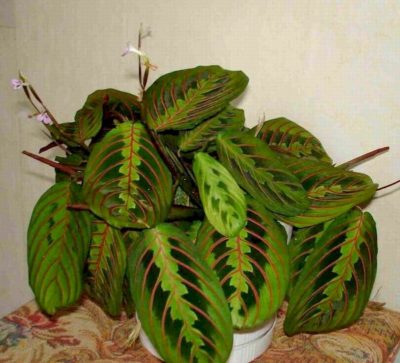

Such a universal mixture deserves special mention:
- 2 parts of peat;
- 4 parts deciduous humus;
- 1 part of rotted manure;
- 1 part river sand.
To give the substrate more looseness, you can add pine bark, sphagnum, crushed charcoal or coniferous soil... Additionally, they arrange drainage by pouring expanded clay, broken brick or small crushed stone on the bottom of the flower pot with a layer of up to 5 cm.
Planting and leaving
Immediately after purchase, arrowroot needs to be transplanted into a spacious pot filled with a nutrient substrate. You can buy it in a specialty store, but you can cook it yourself. After all, loose soil, which allows air and moisture to pass through well, is very important for the further growth and development of this indoor flower.
At home, flower growers prepare various nutritious soil mixtures for planting this plant: a mixture of peat, garden soil and sand, taken in a ratio of 2: 2: 1; a mixture of compost, forest soil, peat and sand, taken in a ratio of 1: 4: 2: 1.
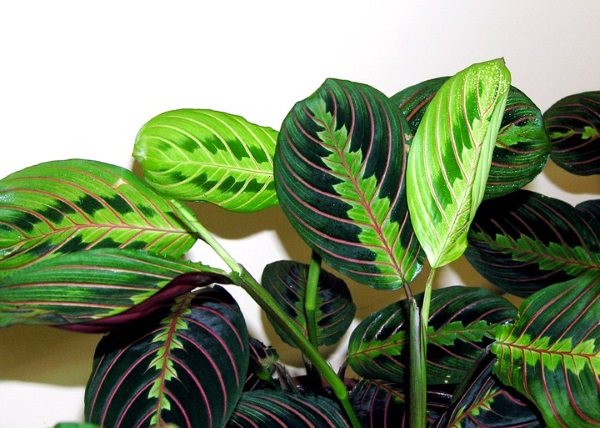

So that the soil mixtures prepared at home are looser and closest to the composition of the soil in areas of natural growth of arrowroot, they are added: sphagnum moss; coal; pine bark; boron soil.
When transplanting this flower, you need to carefully examine the roots of the flower, damaged, diseased and dry ones should be removed, and the cuts should be powdered with coal dust. It is better to use a plastic pot for this flower; it is better not to plant arrowroot in a ceramic container - in winter in such a container the plant will cool too much. The container should be wide and deep enough so that the root system is not cramped in it. A 3-4 cm thick drainage layer should be laid on the bottom.It is better to use small or medium expanded clay, pieces of shards, broken brick as drainage). The thickness of the nutrient substrate together with the roots of the planted flower is up to 12 cm.
Choosing a flowerpot
Arrowroot roots grow horizontally. Therefore, the flowerpot should be wide and low. Better to take a plastic container. When transplanting, it should be 2-3 cm larger than the previous one. At the bottom, drainage holes are required for free drainage of water.
Illumination and place where to put
The plant loves full lighting in good quantity and in diffused quality. The flower does not tolerate direct open sun, as well as completely shaded places. Lack of light can be compensated for with a lamp. Open sunlight can easily burn foliage, and if not, it will not benefit its attractiveness. A transparent curtain or tracing paper glued to the glass will help provide the plant with moderate light. The east and west windows may not have a curtain. If a flower is taken out into the garden, it definitely needs an openwork shade from the tree.
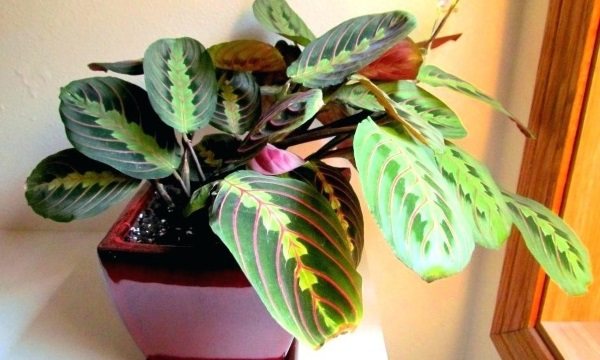

The place where the flower will stand is chosen far from bright sunlight - from such lighting, the foliage of the flower fades, becomes withered. Even on windowsills that face the north side, arrowroot will suffer from excess lighting. Therefore, it is better to put a container with a flower in the back of the room on a shelf or on a rack. In this case, the plant will actively grow the vegetative mass. Small white flowers may even appear.
Humidity of air and soil
Both are very important for arrowroot. Unfortunately, in city apartments the air is drier than this tropical culture requires, and it requires up to 90% humidity, so you will have to create comfortable conditions artificially by installing a container with a large surface of water evaporation. For example, a tray with wet sand or pebbles, which can be artistically beaten to fit into the interior. Daily spraying is desirable.
Watering must be properly calculated so that the soil remains permanently moist, but not wet. In winter, watering is reduced. It is necessary to moisten the soil at this time only when it dries out by three centimeters. You can check this "by eye" by dipping your finger into the substrate.
Temperature regime
The pot with arrowroot should be placed in a warm room (ideally + 24C), it does not tolerate too low temperatures, experiencing a shock from this, from which it may not move away. This further complicates the problem of high humidity, as it evaporates quickly in a warm place. A compromise must be found. In winter, the temperature should be lower than summer by about 5 degrees, which is compensated by a reduction in watering. Drafts for arrowroot are unacceptable! In addition, the pot with it should not be placed on a cold windowsill or kept on the floor.
Priming
The soil for planting arrowroot should be breathable and moisture-absorbing. To reduce the density of the soil mixture, you can add sand, vermiculite, peat to it. If the mixture is self-assembled, it should be based on leafy earth. About half of this amount of high-moor peat and the same amount of sand, preferably quartz and coarse, are added to it.It is very good to add a little fallen needles, small pieces of bark, charcoal to the soil. The drainage layer is made 3-5 cm high.


The soil for arrowroot should be slightly acidic. To prepare the substrate yourself, you need to mix:
- garden land (3 parts);
- peat (1.5 parts);
- sand (1 part).
You can mix peat, humus and leafy soil in equal proportions. A small amount of wood ash will help prevent root rot and soil acidification. At the bottom, there must be a drainage layer of expanded clay or coarse sand.
Top dressing
Fertilization is desirable and permissible only during the growing season. In the fall, feeding is stopped so as not to provoke a failure in life cycles. The best option would be a composition for non-flowering decorative deciduous crops grown at home. At the same time, it is better to use a concentration half of the recommendations, since an excess of fertilizers has a bad effect on the visual attractiveness of this plant. Frequency - no more than 2 times a month.
Pruning
Arrowroot is not afraid of radical pruning, so it can be practiced periodically in order to improve the appearance of the plant, its compactness and active growth.
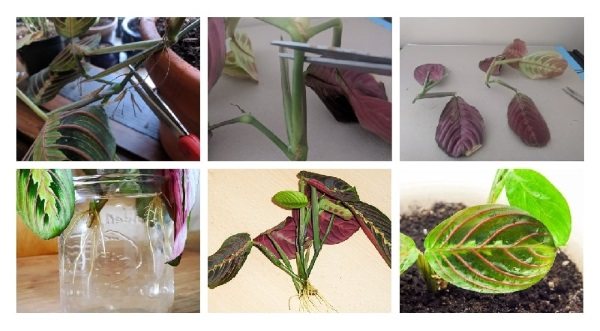

It is recommended to prune the plant at the beginning of the growing season. It is advisable to remove all leaves. Thanks to its powerful root system, the arrowroot will recover within a month. The new bush will be more lush, the leaves - with a more intense color. If many long shoots appear, they can be trimmed to give the bush a neater appearance.
Transplanting arrowroot
"Praying Grass" does not grow very quickly; only very young specimens need an annual transplant. Subsequently, this should be done as the root system grows, which in arrowroot is quite voluminous. Its location is superficial, so there is no need for a deep pot. But its width should be sufficient.
It is necessary to transplant the purchased copy, but not immediately, but after 2-3 weeks.
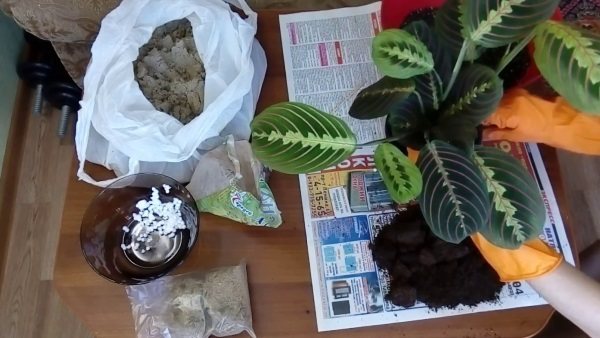

Transplant procedure:
- Place a drainage layer in a new pot. Sprinkle it with a little soil on top.
- Gently remove the plant from the old pot. Together with the earthen lump, transfer into a new one.
- Fill the pot with soil so that there are no voids.
- You cannot feed the plant for a month after the transplant.
- Before moving the arrowroot into a new container, remove old dried leaves from it.
Many experts advise cutting off all shoots, leaving only 1 internode. This stimulates the growth of young stems and makes the shrub more lush.
It is highly discouraged to buy a plant during the cold season. Firstly, it may not tolerate crossing a cold street, and secondly, it will have to be disturbed during the resting phase, which can unbalance it for a long time and cause a failure of the correct rhythm. When transplanting, you should try to preserve a lump of earth as much as possible, only filling up the substrate in empty places.
Reproduction
There are several ways to propagate a plant.
- By dividing the bush... In this case, when transplanting arrowroot, the maternal rhizome is divided into several daughter tubers with well-developed roots and leaf blades. Juveniles are planted in separate containers with loose, light soil and covered with cellophane wrap or plastic caps for better survival. After that, the pots are placed in a warm place for the final rooting of the plants.
- Cuttings... A section of the stem 8-10 cm long with two internodes and several healthy leaves is taken from the apical shoots, and then placed in a container with settled water. To accelerate root formation, cuttings are treated with a growth stimulant. The germination process usually takes 1 - 1.5 months. After that, the cuttings are transplanted into an air-permeable peat-sandy substrate and watered well. For quick rooting of seedlings, small greenhouses are arranged.
Description of the variety
The leaves of the plant are large, bright, have bizarre patterns, by which it is easy to recognize it among other ornamental grasses. The plant changes color twice a day, since the leaf plates of the lower and upper sides are different. Arrowroot native to the tropical swamps of America. But some of its species have adapted well to life in indoor conditions. It is usually bred for its beautiful foliage. Although the plant cannot be called too capricious, caring for it requires certain knowledge and skills.
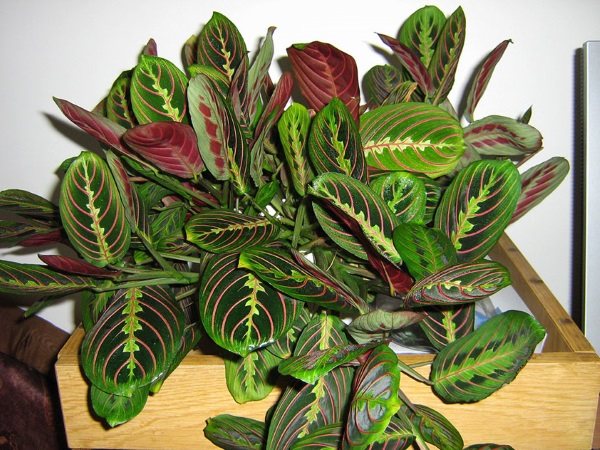

Arrowroot belongs to herbaceous perennials.
- In the wild, arrowroot is a small plant, about 20 cm in height, with straight or creeping shoots.
- Leaves, depending on the species, are lanceolate, rounded or oblong.
- Against an even background (its color can be different - from very light to dark green), spots and veins stand out brightly.
- On the even background of arrowroot leaves, spots and veins stand out brightly.
Arrowroot is often confused with a relative of calathea. However, these plants have obvious differences. Calathea is higher (from 60 cm to 1 m), with long delicate leaves. They, unlike arrowroot leaves, are located on the petioles in two rows.
In addition, arrowroot flowers are inconspicuous, and calathea flowers are spectacular and bright. Arrowroot leaves are so unusual and beautiful that this plant is bred precisely because of their decorative effect. The plant is unpretentious in care and adapts well in the home or office, in open and closed florariums.
Benefit and harm
The decorative form of this plant is appreciated by flower growers for its beautiful rosette of oval leaves, the color of which is dominated by various shades of green, complemented by an accent in the form of bright veins, stripes and spots.
A close relative of this flower, the arrowroot reed, is widely used in cooking. Here underground tubers, rich in starch (up to 25%), are used. They make flour, which is used to make nutritious puddings, sauces, soups, stews and baked goods.
Various types of arrowroot also have healing properties. It is believed that a pot with a living plant placed next to the sleeping area can heal insomnia... A number of amateur flower growers believe that it harmonizes the inner living space, helps to cope with bad moods and bouts of aggression, and smoothes quarrels.
Harmful effects on humans of arrowroot does not renderas it does not emit a toxic milky sap and does not have sharp edges that could cause cuts.
Arrowroot reed, or arrowroot West Indies
Reed arrowroot (lat.Maranta arundinacea) is a perennial plant from the Marantaceae family. It grows in the form of a low-growing shrub no more than 1 m in height. From its rhizomes, arrowroot starch, popular in Latin America, is obtained, and boiled tubers are used for food. In many countries, it is grown as an indoor and ornamental plant. It is often referred to as Arrowroot West Indies or Real.
For industrial purposes, arrowroot reed is grown in the tropical zone. The main producer is the island state of Saint Vincent and the Grenadines, located in the Caribbean Sea. It is also cultivated in Brazil, Australia, Southeast Asia and South Africa.
Arrowroot, unlike other starches, does not contain gluten (gluten), therefore it is widely used for the preparation of dietary meals and artificial baby food. Recently, it has been used for the production of biofuels and specialty papers.
Arrowroot has thin branched stems and horizontal scaly rhizomes. Ovate-lanceolate leaves of a dark green color, rather large, 6-25 cm long and 3-10 cm wide.
Diseases and pests
Spider mite
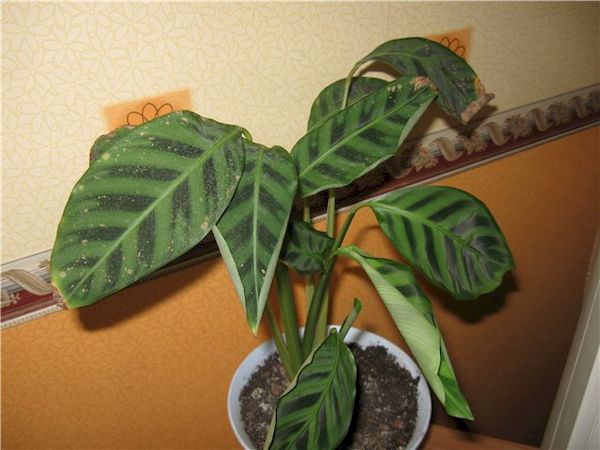

This is one of the most dangerous plant pests.It settles on the underside of the leaf blade, causing the appearance of white spots and a thin cobweb. Over time, the leaves lose their usual color and fall off.
To prevent this phenomenon, it is necessary to avoid excessive dryness of the air in the room, producing periodic spraying flower with water. In case of an already developed disease, special insecticidal preparations are used, in particular Fitoverm, Aktellik, Funanon, etc., as well as pollination with sulfur preparations in the open air outside the living quarters.
Shields
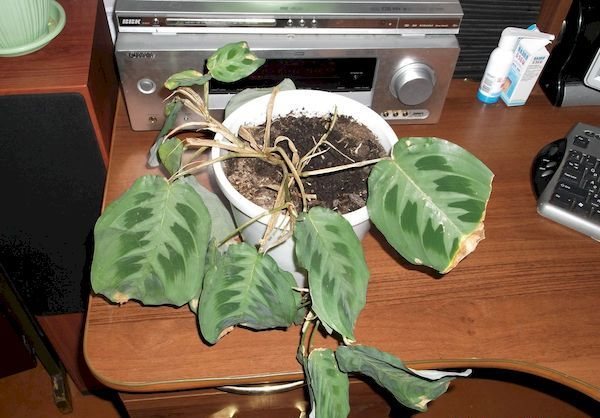

A sign of defeat by this pest is the appearance of brown protrusions on the leaves and stems. The leaf blade dries out, curls, loses its characteristic color and falls off (for details on what to do if the arrowroot leaves turn yellow and dry, as well as what diseases and pests can destroy the flower and how to treat the plant, read here).
A radical means of combating this disease is either washing the affected areas of the plant with a 5% soap emulsion (20 grams of laundry soap per 10 liters of water), or spraying with Actellica solution, prepared at the rate of 1 - 2 ml of the product per 1 liter of water.
Mealybug
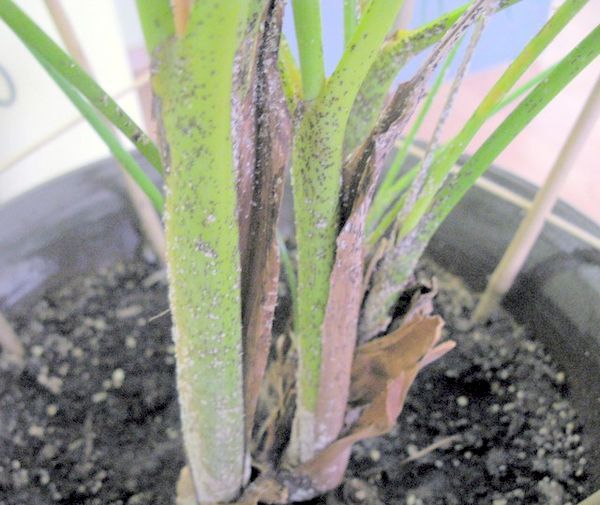

It primarily affects leaf stalks. To destroy it, use the same drugs as in the case of the shield. If necessary, the treatment is carried out repeatedly until a stable result is achieved.
List of problems when growing a flower
- Slow plant growthwhile the edges of the leaves appear dry and brown. This means that the arrowroot lacks moisture. Frequent spraying can solve the problem.
- Collapsing of leaves and the appearance of spots... A frequent occurrence with occasional watering. The main rule is that if the ground is dry, then it's time to water the arrowroot.
- The edges of the leaves have changed color to yellow-brown... A sign of long-standing flower feeding and a lack of necessary substances in the soil. Or it may be the other way around - overfeeding the earth.
- Falling leaves... If the phenomenon is massive, then the bush receives too much water or the air in the room is very dry.
- Leaf pallor and drying... Maranta clearly doesn't like this place. Perhaps the plant is too sunny here.
- Sluggish stems and rotting... Such a nuisance occurs during cold weather and high humidity.
Photo gallery
The second was awarded to the plant for the fact that one of its varieties has ten white spots on the leaves. Belongs to the Marantov family.
Arrowroot is not poisonous, you can safely do a flower transplant without gloves. The plant does not require special care. The main thing is to observe the temperature regime, water it abundantly, cut off dry leaves and replant it 2 times a year, in spring.
Choose a medium-sized pot - the arrowroot does not have a very large root system. It has a positive effect on people: it perfectly cleans the air and improves sleep.
If you want to buy a flower that looks like arrowroot, then a great choice is ktenanta or calathea. The most similar to praying grass is observed in the popular variety of ktenants - lubbers. There are slight differences in appearance and in breeding methods - arrowroot propagates by shoots, and calathea - by dividing the bush.
Arrowroot flower: use in cooking, the secrets of growing
Arrowroot is an amazing flower.
Back in the 16th century, thanks to the scientist Bartolomeo Marant, the flower became known to the world.
The botanist spent his whole life looking for an antidote to all poisons - theriaka and hoped that the arrowroot would complete his search.
Many call the flower "prayer" because of the specks on the leaves, the number of which corresponds to the number of the biblical commandments. This plant brings peace, joy and well-being to the whole family. And arrowroot is an excellent remedy for depression.
Temperature, lighting and a comfortable place
Indoor arrowroot loves warmth, so in summer the temperature should be 20-25̊ C. In winter - about 17-18 ° C. The plant is afraid of drafts, and if it is under their influence, it immediately begins to dry.A pot with a heat-loving flower cannot be on the windowsill. In the warm season, arrowroot can be taken outside, but always in the shade, not blown by the wind.
From October to February, the plant has a rest time. During this period, the temperature regime is 18-20 ° C. Most importantly, avoid sudden changes in temperature.
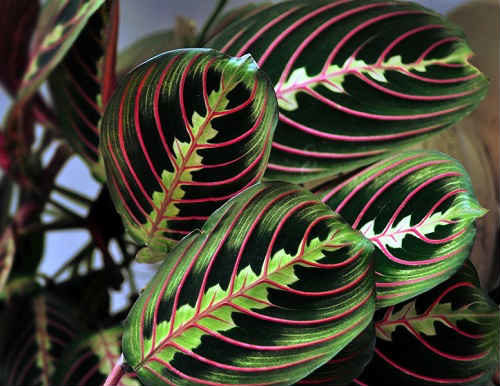

In direct sunlight, its leaves turn pale. The plant feels best in partial shade, in diffused light. The ideal option is a stand in the center or at the back of the room.
Arrowroot in the house: signs and superstitions
There are indoor plants around which there are many legends and superstitions. These include arrowroot. It is believed to be capable of enriching whoever it belongs to. It is recommended to put this flower in the kitchen or living room, where all family members usually visit. Maranta is considered the keeper of family comfort. It normalizes a favorable aura in the house, brings peace and harmony in relationships between family members. It is a good helper in the fight against irritability, depression, insomnia. If someone is sick in the house, it is advisable to put a flower near the bed at the head.
Bloom
Arrowroot rarely grow taller than 20 cm. Their leaves are very remarkable, they have brightly colored veins and colored spots. The general color of the leaves ranges from white to dark green or black. Leaves are linear, ellipsoidal, or oval-round.
It rarely blooms, especially in captivity. But if, nevertheless, it blooms, then this is a real victory for the owners. The inflorescences of the plant are small, light yellow, pink or white. Usually, they are collected in a spikelet.
Arrowroot includes more than 40 species:
- white-veined (Maranta leuconeura kerchoviana);
- Kerhoven (Maranta Kerchoviana);
- Massangeana (Maranta Massangeana).
Read more about them in this article.
Arrowroot flowering
Flowers that appear periodically from mid-summer to autumn are best removed. The flowers in most are low-decorative, white or cream in color, collected in a spike-shaped inflorescence.
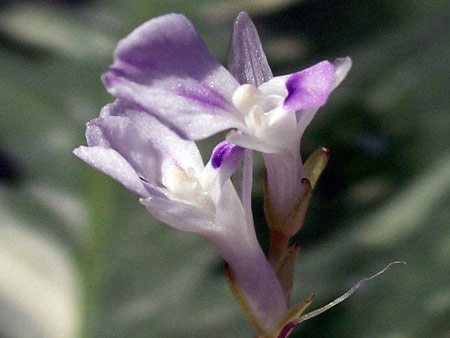

Arrowroot flowering
Pruning
If you want to keep the plant thick and neat, trim off any leaves that are too long.
Reproduction of arrowroot
Arrowroot propagates not by a leaf, but by a cuttings - a leaf with a heel, part of the stem, and a knot.
You can get another copy of this beautiful home plant by division during transplantation or by cuttings. It is advisable to do this in the spring, but in principle, arrowroot multiplies easily at any time of the year, if it is light and warm enough.
From a large bush, you can cut off two or three shoots with a small part of the roots and plant in a small pot. For the plant to take root better, never plant arrowroot on hot days, and after transplanting, you can place the pot in a plastic bag - straighten the edges, but do not tie it. Cuttings root fairly easily in water. The water needs to be changed if it loses its transparency. You can plant it in a pot when the roots grow 3-4 cm long.
Indoor humidity
Like any native of the tropics, arrowroot prefers conditions of detention similar to the climatic features of their natural habitat. Humidity is no exception, which should be as high as you can achieve. Throughout the year, arrowroot must be sprayed daily with soft water from a spray bottle. In winter, when heating systems are working in the rooms, it is recommended to spray arrowroot twice a day - in the morning and in the evening.
It may be interesting: Guzmania (Gusmania) - description, types and varieties
In the summer, it is advisable for the plant to arrange a warm shower, but at the same time the pot should be covered with a film so that water does not get into the soil. To further increase the humidity, the flower pot is placed on a pallet with wet expanded clay or pebbles. Make sure that the roots do not come into contact with moisture, as it will cool and prevent the earth from drying out, and, as we said earlier, arrowroot does not tolerate low temperatures and swamps in the soil.
Top dressing
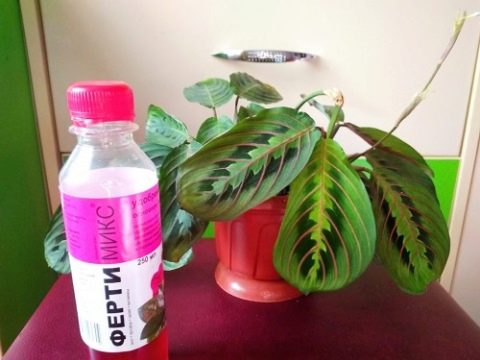

It is required to feed arrowroot once every 2 weeks, from early spring to autumn. Complex fertilizers are used for decorative deciduous indoor plants. The flower is quite sensitive to an excess of fertilizers, so their concentration should be half that indicated in the instructions. In autumn and winter, arrowroot is fed 1 time per month, if it is not provided with a pronounced rest period. Otherwise, feeding is completely stopped.
History of appearance
The plant is named after the medieval botanist Bartomoleo Maranta. French fashion designer Isabelle Maranth, whose bright and stylish outfits will allow her to pass a strict dress code, is not a relative of the scientist. He was also known as a doctor, Maranta was engaged in the study of the beneficial properties of plants.
The plant got from America to Europe about 100 years ago. Despite a completely different climate, the flower took root, and new species and varieties were obtained. Scientists found that the plant was discovered in America much earlier than Bartomoleo did. It has been used for starch production 3000 years ago. Now for these purposes reed arrowroot is grown. It is also bred at home. The leaves of the reed arrowroot are ovoid, pointed at the tips.


Arrowroot reed has the most lush bushes due to densely planted variegated leaves
Charming, wholesome and mystical
Arrowroot is a miniature, about 20 cm high plant with very picturesque leaves. They are large (up to 15 cm), resemble an egg in shape and are painted on the upper side with original colored patterns: red, silver, brown or olive spots, dots and veins are symmetrically located on a green background. And the wrong side is usually crimson-pink or bluish-gray. The stems of the young arrowroot are directed upwards. And over time, if the bush does not find support, they hang down or spread. The plant is demanding on home conditions, but it can be successfully grown in apartments, knowing the rules of care.
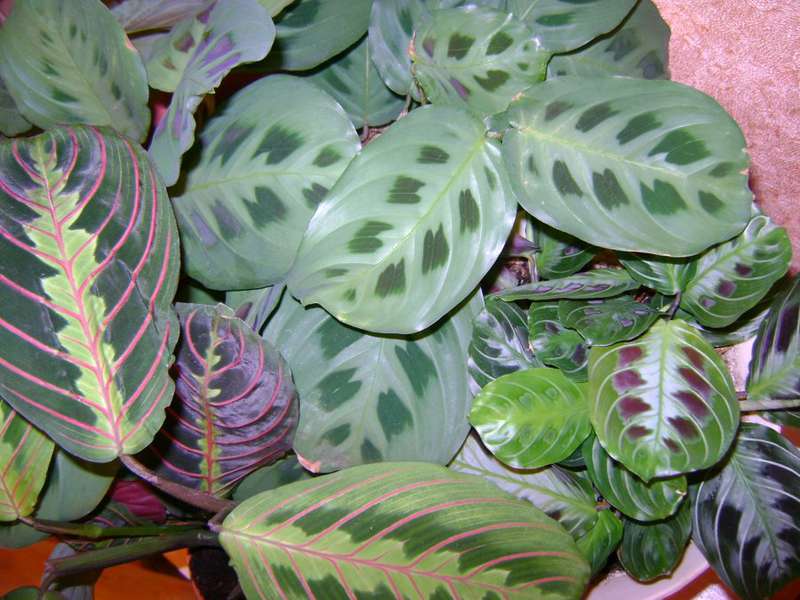

Arrowroot is valued for its beautiful foliage: on a green background, a symmetrical pattern of red, silver, brown spots and veins
Arrowroot gave the name to the whole family, which includes plants cultivated as indoor plants: ctenants, stromanths and calatheas. Arrowroot is often confused with the latter. But the calathea has a higher growth, the leaves are longer and differ in pattern, and most importantly, the character is more capricious than that of the mother of the family, arrowroot.
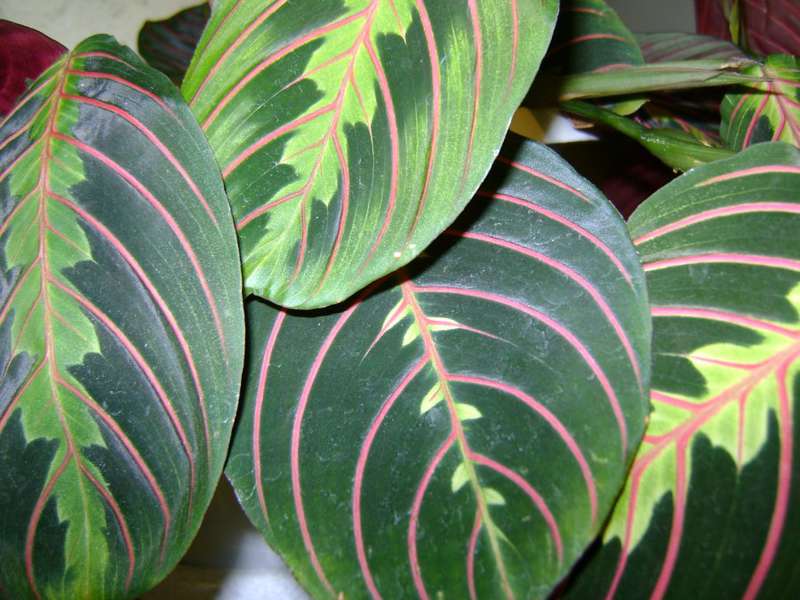

One of the most decorative is arrowroot fasciata with tricolor leaves
The arrowroot was born at the very bottom of the South American tropical jungle, in the swamps. Where the air is always humid with vapors and warm, and the sun rarely comes in. The first, three thousand years ago (this was proved by the finds of archaeologists), were domesticated by the Indians. The plant conquered them not at all with its beauty, but with edible rhizomes, leaves suitable for weaving, and healing properties. At home, arrowroot was called arrowroot, and warriors who were struck by poisoned steles were treated with its juice.
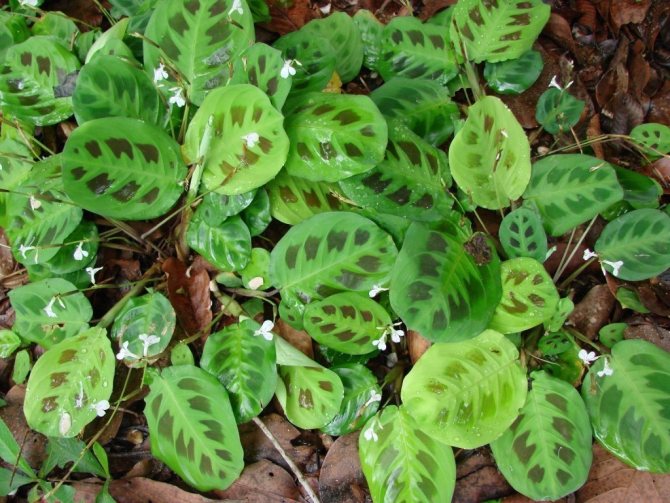

Maranta were the first to be "discovered" by South American Indians
A rare type of starch, arrowroot, is prepared from the roots of arrowroot. It is used as a thickener in the preparation of pudding, jelly, sauce. Used as flour in dietary meals.
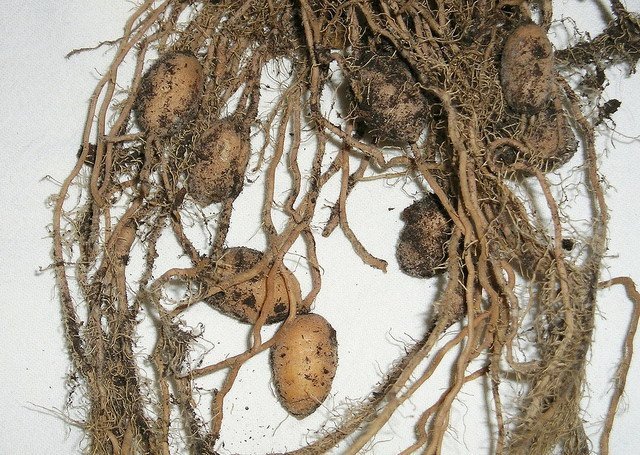

Almost all arrowroot varieties develop tubers on the roots.
The grace of a tropical beauty was appreciated in Europe only in the 17th century. A certain planter saw a miniature variegated plant in the bogs near the city of Santa Cruz and brought it to the Old World. The delicate flower was given a name, perpetuating the memory of the Italian scientist Bartolomeo Maranta. A tiny arrowroot struck the prim Englishmen with their folded palms in the evenings and their intricate pattern. For this she was nicknamed the prayer plant and the flower of the 10 commandments, according to the number of specks on the leaf plate. And it has become a good tradition to keep at least one arrowroot in the house.However, the adorable baby turned out to be a rather capricious pet. She did not want to live in a gassed and dry air and forced flower growers to invent special greenhouses to maintain a humid and warm atmosphere, which they called florariums. Arrowroot also settled in greenhouses.
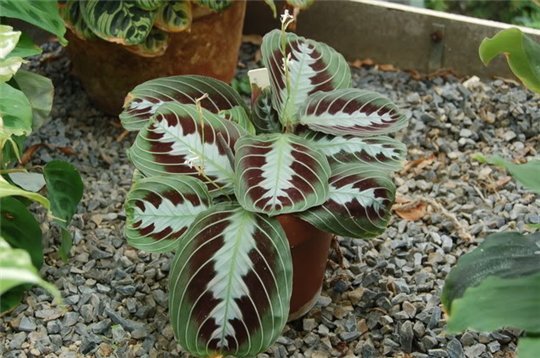

Arrowroot grow well in greenhouses and greenhouses
When the air in the houses became cleaner, and the flower growers learned to humidify it, the whimsical arrowroot moved closer to the person. She is still not considered an easy plant to care for. It should not be started, for example, by a child as the first flower. But an experienced florist will quite cope with the requirements of arrowroot. And growing this plant is an exciting experience. In addition, arrowroot is a great option for shady rooms. For life, she does not need a lot of light, and decorative leaves in partial shade will be even brighter. The high humidity, which arrowroot dreams of, will be useful to other residents of the apartment.
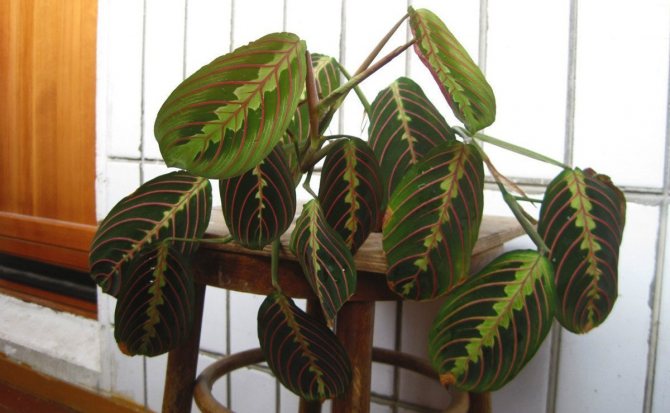

Arrowroot on a high stand or in a hanging planter will decorate the shady corners of the house
White-veined, tricolor, reed and others
A total of 23 species of arrowroot are described. Of these, the most popular arrowroot is white-necked and its varieties: tricolor (tricolor), kerhovena and massange. These plants are considered the least moody members of the demanding arrowroot family. Let's get acquainted with its representatives in more detail.
- White-necked arrowroot has gained popularity among flower growers as a not very whimsical plant. The stems, which do not grow higher than 30 cm, have large pistachio-colored leaves, on the front side there are silvery veins and a pattern of spots. The bottom is green or reddish. The tubers are clearly visible on the rhizome of the white-necked arrowroot. The plant simply multiplies, not too demanding on conditions and care.
- Arrowroot tricolor, also known as tricolor and fascinator, is the most common and spectacular variety. On oval leaves with red, yellow and different shades of greenery, a pattern is applied, similar to the coloring of the feathers of an outlandish bird. But there is also a less poetic comparison: the tricolor arrowroot was given the nickname - the red herring ridge. This compact plant works well at home, but will look better in a florarium or bottle garden.
- Arrowroot massange is slightly larger than tricolor. Its foliage is dark green, almost black, decorated with silver veins and spots in the center. This variety is more whimsical than other arrowroots.
- Kerhoven's arrowroot is another popular variety. Young plants have two rows of dark brown eye-spots on pale green leaves. Over the years, they turn green. The underside of the leaves can be bluish or reddish-pink. Roots with small tuberous thickenings. This plant is the most hardy of the arrowroot, even an inexperienced florist can handle it.
- Arrowroot reed is the tallest, in nature its growth is more than a meter. Leaves in the form of a long and pointed oval of dark green color with a bluish tint. Slightly pubescent below. The plant has thickened tuberous roots.
- There are variegated (variegated) forms of arrowroot reed. Their pattern is not symmetrical like other varieties. White, yellow or red spots and strokes are scattered randomly over the leaf.
- Arrowroot bicolor is a rare plant that is sometimes distinguished as a separate species. Similar to the Kerhoven variety. On reddish petioles, ovoid leaves, wavy along the edge. Above - a pattern of green and brown spots, the underside is reddish and covered with light down. There are no tubers on the roots.
Photo gallery: varieties of arrowroot
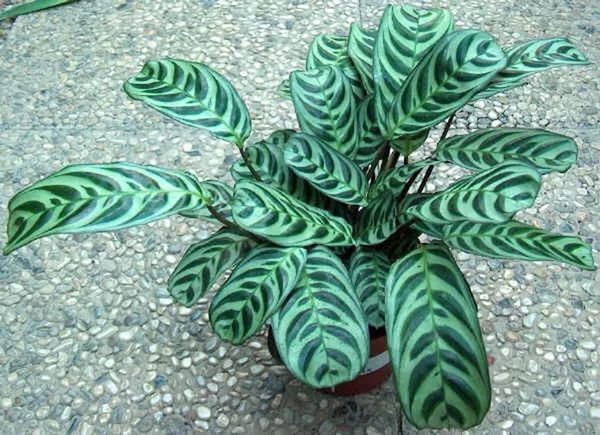

Arrowroot white-necked
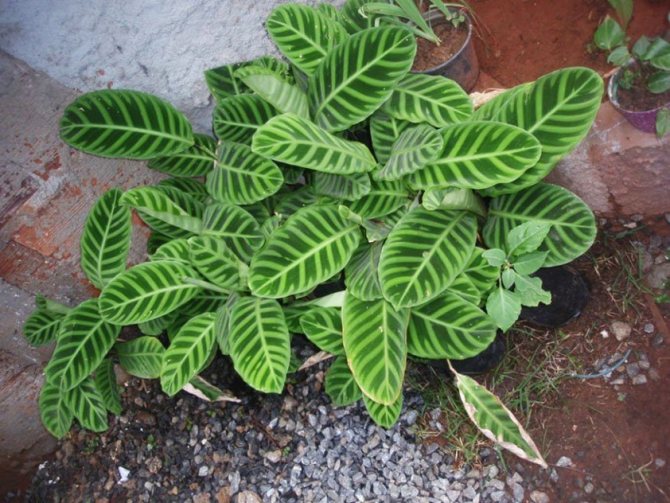

Arrowroot two-color
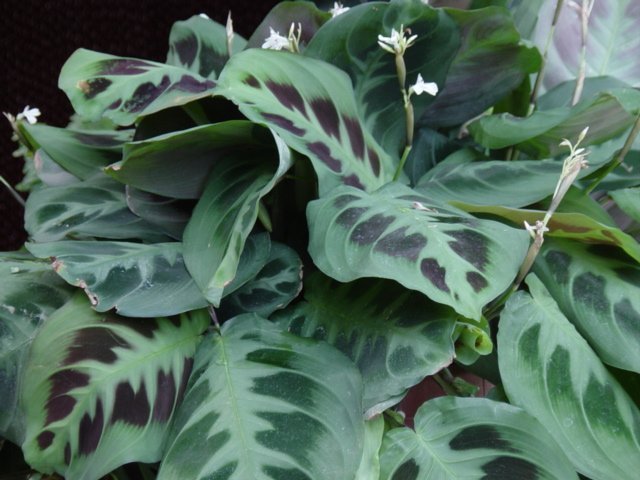

Maranta Kerhovena
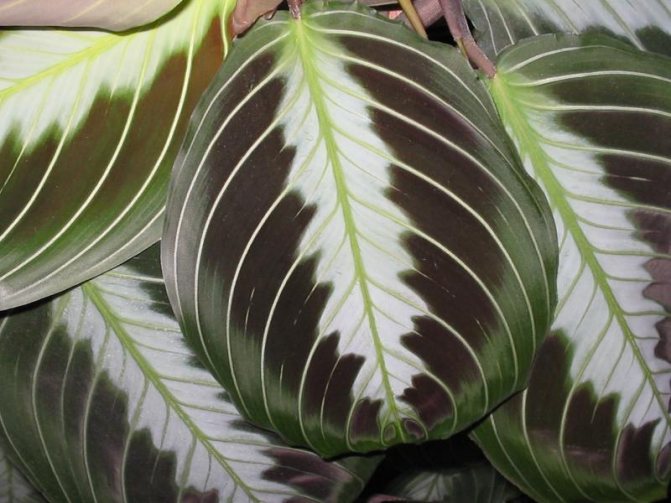

Arrowroot Massange
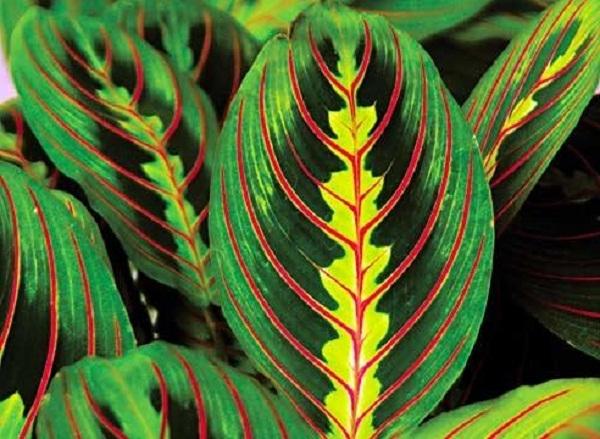

Arrowroot tricolor, aka tricolor and fascinator
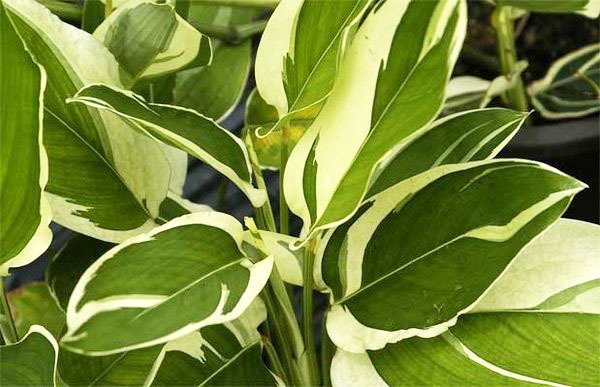

Arrowroot reed variagatny
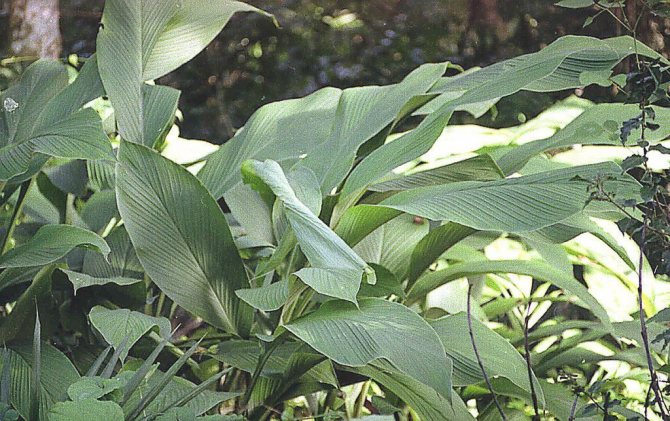

Arrowroot reed
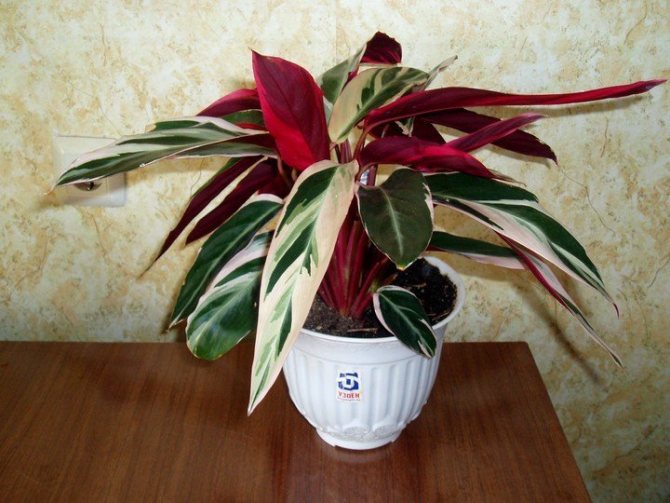

Arrowroot reed variagatny with red leaves
No mysticism
For a long time, arrowroots evoked mystical awe and delight. People could not explain why, with the arrival of darkness, the plants fold their leaves, stretching them to the sky, as if in prayer. And in the morning they again open the palms of the foliage, meeting the sun.
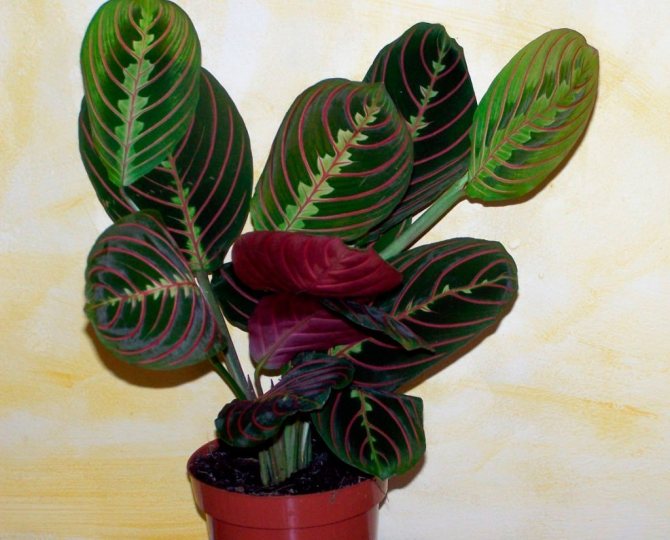

With the arrival of darkness, arrowroot folds the leaves, stretching them to the sky, as if in prayer
Botanical scientists have debunked this mystery. It turned out that there was nothing mystical about the touching gesture. Everything is explained by the simple desire of the arrowroot to get a little more light. A plant from the very bottom of a dense jungle changes the angle of the leaves so that they are better illuminated by the sun. During the day, the leaves are located almost parallel to the ground, and in the evening they rise vertically, substituting the inside out to the setting sun. And on the eve of a change in weather from sunny to rainy, arrowroots behave the same way. For this they have earned the fame of a natural barometer.
Video: a praying plant picks up leaves
Interesting facts about arrowroot
The beautiful plant is named after Bartolomeo Maranta, a botanist and physician from Italy, who lived in the 16th century. The seeds came to Europe with the help of the American statesman W. Houston, who was also a planter. He first discovered the plant near the city of Santa Cruz and exported its seeds to European countries. The unusual flower immediately came to the liking of their residents and took its rightful place in greenhouses and greenhouses. A lot of interesting things are told about him:
- Arrowroot tricolor is also called a prayer plant.
Arrowroot tricolor is called a prayer plant because its leaves miraculously react to light. With a lack of lighting, the sheets take a vertical position, in shape they resemble a closed outlet; with sufficient lighting - they are turned away, placed horizontally, and the socket opens. So, in the evening the arrowroot leaves fall, and in the morning they unfold. Due to the fact that the colors of the upper and lower plates of the leaves are different, it turns out that they change color twice.
- Arrowroot (a special type of starch) is made from the roots of reed arrowroot. It is used as a thickener for puddings and jellies; in sauces, stews, soups. Archaeological excavations in America have shown that arrowroot was cultivated for a very long time (3000 years BC).
- The Indians considered the plant to be medicinal. From its rhizomes, an antidote was produced to treat a wounded person with poison arrows. It is not for nothing that, translated from English, arrowroot (reed arrowroot) is an arrow root.
- Some growers believe that the flower relieves depression, absorbs aggression, protects against quarrels.
Signs of improper care
It is quite simple to understand that the plant is being looked after incorrectly:
- if the foliage begins to dry, the plant is standing in a draft. If the draft is not prevented, arrowroot may even die, as it is a very thermophilic "pet";
- foliage has become faded, grows poorly - this is a sign of excess light, you need to remove the plant away from the windowsill;
- foliage stretches vertically up, its leaves are folded togetherlike the hands of a praying person, without dropping in the daytime - there is a lack of lighting.
How to reanimate?
If the arrowroot begins to wither, the foliage has lost its natural shine and began to dry, most likely the plant is kept in improper conditions. In order to revive a flower, you need to carry out the following activities:
- set the required temperature and humidity;
- check if the lighting is too bright for the plant;
- there may be excessive watering;
- the plant is in a draft; maybe the plant needs replanting.
It is enough to create optimal conditions, and the arrowroot will come to life.
Lighting
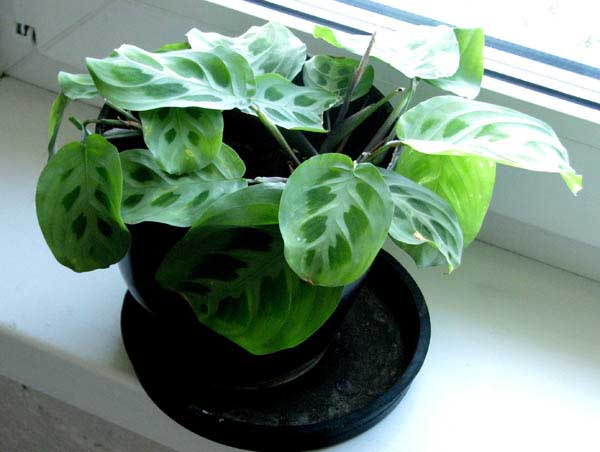

Despite the fact that our tropical plant loves bright light, arrowroot must be protected from direct sunlight. With prolonged exposure to such rays, the leaves of young specimens will begin to shrink, and adults will turn pale and lose their bright color.Therefore, we recommend placing the flower pot on the windowsills of the east and west windows. Make sure the plant remains in partial shade during the height of the day. Blinds or translucent curtains can contribute to this.
In winter, when the length of daylight hours is significantly reduced, arrowroot is grown under fluorescent lamps. The duration of the lighting should be about 16 hours a day.
Temperature
Arrowroot does not like excessively high or low temperatures. Try to keep your indoor temperature at 23-25 ° C during the summer. From mid-autumn to early next summer, the comfortable temperature for the plant is slightly lower - 18-20 ° C. At the same time, make sure that the soil temperature in the pot does not fall below 18 ° C (which can happen when watering with cold water), otherwise the arrowroot can get sick. The flower can withstand a short stay in a room with a temperature of 10 ° C, but not lower.
Arrowroot does not tolerate sudden changes in temperature and drafts, so when airing the room, take the flower pot to another place.
Growing conditions
So that the plant does not lose its decorative effect, grow actively, and sometimes even bloom, it is necessary to create conditions for it that are close to natural. More on this below.
Temperature
During the summer and part of autumn, in the room where the arrowroot is located, the temperature should be maintained at about 24-25 ° C, and the soil temperature in the container should be about 18 ° C.
From the middle of the autumn period to the last decade of the spring season, the air in the room should be warmed up to 19-20⸰С.
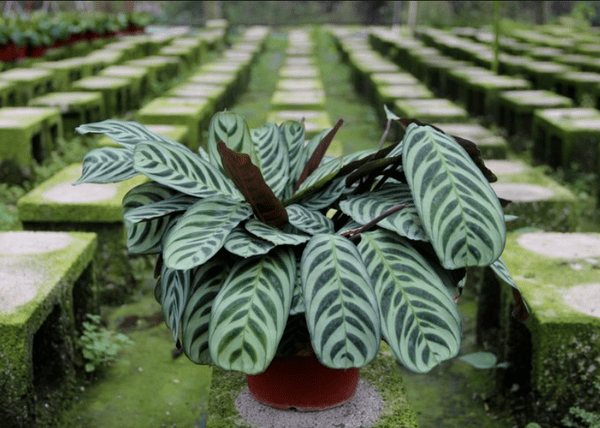

Air humidity
The humidity in the room is kept high - about 85% and higher. Every day, at any time of the year, you need to spray the foliage with a spray bottle, and put a layer of wet expanded clay 3-4 cm thick into the pallet, on which a container with a flower is installed.
Lighting
This flower requires bright, but diffused light, so if direct sunlight falls where it stands, it must be “hidden” behind a light curtain. Also arrowroot can grow quietly under artificial lighting. But in this case, the duration of daylight hours should be at least 15-16 hours.
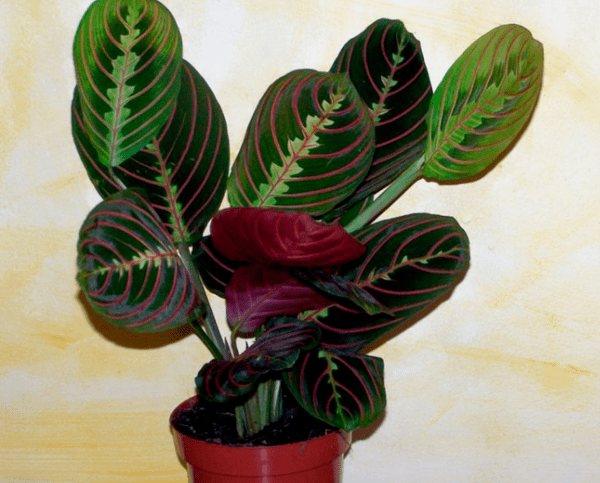

Choosing a place where to put
The place where the flower will stand is chosen far from bright sunlight - from such illumination, the foliage of the flower fades, becomes withered.
Even on windowsills that face the north side, arrowroot can suffer from excess lighting. Therefore, it is better to put a container with a flower in partial shade on a shelf or on a rack. In this case, the plant will actively grow the vegetative mass. Small white flowers may even appear.
Note! In winter, when the length of daylight hours decreases, you can move the plant closer to the light, but it is not recommended to put it on the windowsill.
What does it look like in the interior?
This plant immediately attracts attention due to the unusual color of the foliage - lines of different colors run along the green background (depending on the variety). The patterns they make up can also be different. therefore arrowroot is grown as an ornamental deciduous plant.
Often, flower growers install several such plants with different colors of foliage on racks in the center of the room, choosing them so that arrowroots of different varieties favorably set off each other.
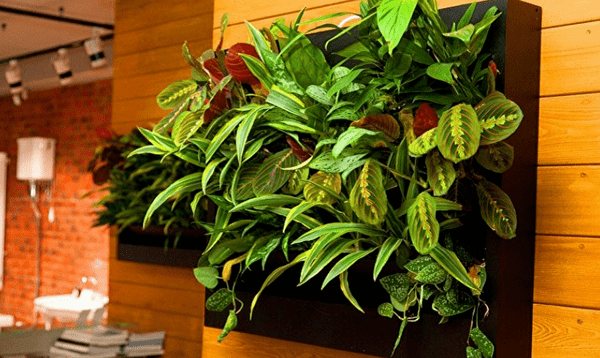

How to care for a South American beauty arrowroot
This plant loves warmth, a comfortable temperature for it is considered to be 20-26 degrees
Watering. Arrowroot grows in nature near water bodies in wet areas. Therefore, in the summer it is necessary to moisten it often (every other day) so that the soil is slightly moist all the time. Irregular watering may cause the plant to dry out. In winter, it is desirable to reduce its frequency (1 time in 5 - 7 days). The surface of the substrate should be allowed to dry for a couple of centimeters. Excessive soil moisture can cause the root to rot.When watering, you need to prevent water from getting on the leaves, so that fungal diseases do not arise. It is necessary to moisten the plant only with soft water (boiled, rain or settled).
Temperature. Arrowroot loves warm air, + 20 - 26 degrees in summer and + 16 - 18 - in winter. She does not tolerate temperature extremes and drafts. For this reason, it is not recommended to take the plant outside in the summer.
Air humidity
- If the flower is in a room with dry air, spray it a couple of times a day (in summer) and 1-2 times every 7 days in the winter.
- Place the flowerpot in an outer container that has been filled with moist peat.
- You can place the pot on a pallet with damp: moss, sand, pebbles.
- Rinse the plant regularly in the shower, covering the pot with a bag so that the soil does not become waterlogged.
Despite all the measures taken to humidify the air, in room conditions the tips of the leaves dry out from the flower, but in the greenhouse the plants feel great.
Place the plant out of direct sunlight
Lighting. Indoor does not like direct sunlight of arrowroot. In bright light, the leaf plate shrinks, the leaves lose their bright color. In an unlit (dark) place, the color shade of the leaves also fades. Arrowroot prefers bright diffused light (partial shade) and grows best under artificial lighting (16 hours a day) with fluorescent lamps.
Indoors, the best place for placing a flower is a stand in the center of the room. In winter (due to lack of light), the plant can be transferred to the windowsill.
Soil composition. Breathable loose substrate - is the basis for successful plant growth. If you grow it in peat, then you need to add a little dolomite flour to the mixture. You can also use store-bought arrowroot mixes.
It's pretty easy to make your own substrate. There are 2 ways to prepare it:
- Peat (2 parts).
- Leafy land (2 parts).
- Sand (1 part).
Second way:
- Humus (part 1).
- Leafy land (4 parts).
- Peat (2 parts).
- Sand (1 part).
For the looseness of the substrate, sphangum moss, charcoal, pine bark, light soil from a coniferous forest are added to the mixture.
Throughout spring and autumn, the plant must be fed with mineral fertilizers.
Top dressing and fertilizers. From spring to autumn, the flower is fertilized every 2 weeks with a special (for indoor decorative leafy plants) mineral fertilizer (2 grams per 2 liters of water). You can alternate it with highly diluted organic. However, it must be remembered that the plant is sensitive to overfeeding.
In winter, arrowroot is fed with highly diluted fertilizer no more than once every 28 - 30 days.
Plant transplant and care. Arrowroot older than 3 years of age is transplanted in the spring (1 time in 2 years), a young plant - annually. To do this, take a not very deep, but wide pot, slightly larger than the previous one, because the root system of the plant is small and develops horizontally.
It is necessary to remove diseased and old leaves on the plant, and a drainage layer (charcoal, broken brick, coarse sand, expanded clay) must be laid on the bottom of the pot. It should be about 5 centimeters tall.
To make a lush bush from arrowroot, you need to cut off all the shoots at the root. As a result, new fresh shoots and young leaves are formed on the plant again.
Answers to popular questions
Below are the most popular questions about growing and caring for this tropical plant.
Why doesn't arrowroot bloom at home?
Most often, this plant does not bloom indoors. This is due to the lack of suitable conditions close to natural. Insufficient or too bright lighting, lack of moisture, too high or low air temperature, badly affects the appearance of flowers.
How often should this flower be fertilized?
The arrowroot does not have a clearly expressed state of dormancy, therefore, experts recommend applying fertilizers to the soil regularly throughout the year with an interval of 12-14 days. You can use special purchased mineral dressings for decorative deciduous plants, as well as organic matter in appropriate dosages.
How often can a plant be transplanted at home?
Usually it is recommended to replant arrowroot every two years. The best time to transplant is early spring when the plant begins to grow.
Varieties
Tricolor (tricolor). It is a plant with dark green leaves, bordered on the edge by a paler color. Light green stains run in the center. Veins of dark red color become darker towards the edge. Tricolor arrowroot is the most unpretentious and widespread type of this plant.
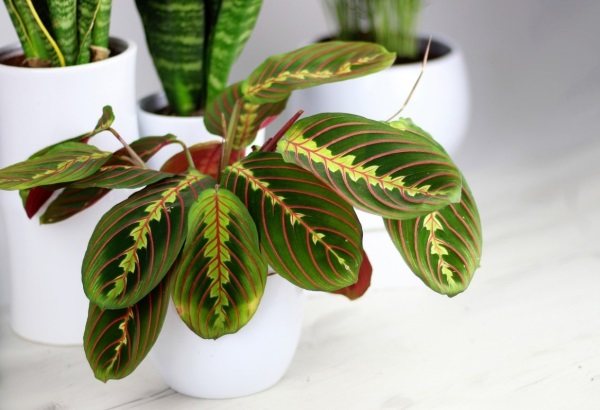

Bush 30 cm high. The leaf plates are pubescent, about 12 cm long. The background of the outer side is dark or light green. It has light green spots and red streaks. The seamy side is crimson with pink veins. The flowers of the plant are light lilac.
White-veined (Fascinator). Leaves are oval, reaching a length of 15 cm. Features: on dark green leaves in the center there is a silvery stripe Along with a tricolor, it is unpretentious.
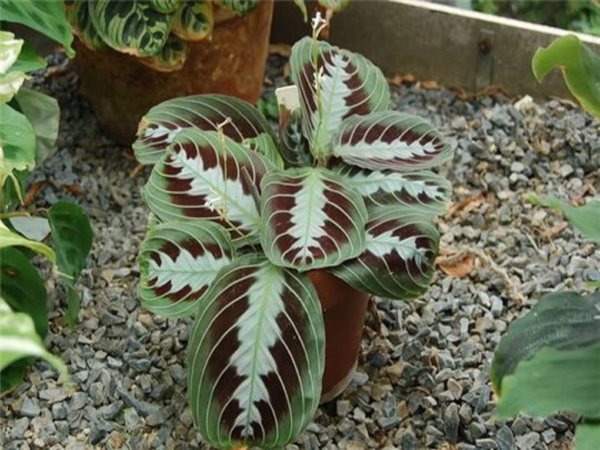

In nature, it grows mainly in the tropics of Brazil. The bush is about 30 cm high, with a tuberous root. The leaves reach no more than 15 cm in length. The front surface is dark green in color, white veins are visible on it. The underside is pale red or blue-green.
One of the most popular varieties is Kerhoven arrowroot. It has a height of up to 25 cm, short petioles, on which are placed oval leaves 15 cm in length. The upper part is bright green, with dark green spots and white streaks visible on it. The inner side is red, turning into a bluish tint.
Arrowroot bicolor. Quite a rare species with dark green leaves, over which light specks are scattered. It differs from others in the absence of tubers. Leaves 15 cm long, with a wavy border, located on short petioles. The background of the leaves is green, with brown spots on it. There are hairs on the seamy side, the color is pale red.
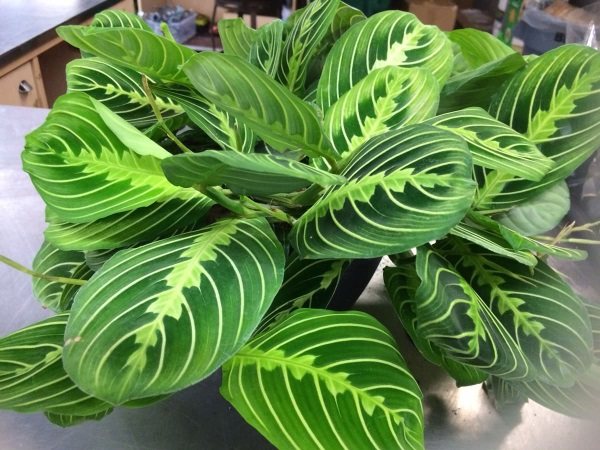

Arrowroot reed. This plant can reach a height of 1 m. Leaves are oval, elongated, have a gray tint. Stems are erect, powerful. The root system is tuberous.
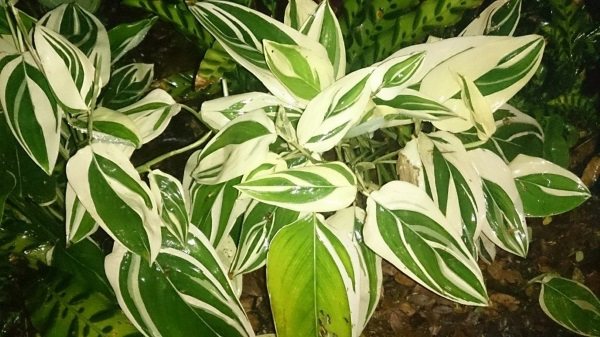

The leaf plates are ovoid, up to 25 cm long, with pointed tops. The background is dark gray with green stripes. The inside is dark green.
Arrowroot pests
Shields: sometimes they damage arrowroot leaves by sucking the juice from the leaves. They can be found if sticky drops appeared on the leaves, not at the tips, but on the leaf blades themselves, at the same time, yellow spots on the leaves, along the veins and on the petioles of small brown pimples, some translucent, others hard, brown, if pressed, remains wet spot.
Control measures. First, you need to wash the plant from pests with a sponge and soapy water. Then dilute the solution of the drug Aktara, spill the soil with it and spray the leaves. Repeat in 5-7 days.
Spider mites: also harm arrowroots, especially if you have roses on the windowsill nearby. Damaged plants are characterized by pale yellow or light colored leaves. If you place the sheet against the light, the tick punctures are visible, as if the sheet was poked with a needle.
Control measures... You can get rid of ticks on arrowroots with a hot shower. Turn on the water with a temperature of 50-55 ° C, turn the pot upside down, holding the plant so that it does not fall out (you can tie it with a bag) and pour from the shower so as to rinse the leaves from the back under pressure. Then place the pot in the bathroom and pour the entire bush on top, including dampening the soil. After that, watering can only be done after high-quality drying of the earth. If you repeat the procedure every 5-7 days, you can get rid of ticks in 3-4 times without chemistry.But it must be borne in mind that if the land dries out poorly, watering must be canceled and the soil loosened. If you doubt the effectiveness of this procedure or are afraid to do something wrong, you can apply acaricide spraying against ticks - these are Apollo, Fitoverm, Derris, Fufanon, Actellic preparations.
Read more about pests of indoor plants in the section "pests"
Arrowroot: plant energy
Maranta combines within itself the energy of Mars, Sun and Mercury. Therefore, she has the ability to cleanse the house of negativity and aggression, as well as attract wealth and luck to it. It is believed that the flower will be useful for families whose members are active and emotional people.
Also arrowroot can help those who have sleep problems - it promotes relaxation, abandonment of fuss and worries. The flower is also perfect for people who are in search of themselves, who believe that their lives are wasted, and those who have lost hope of finding happiness.
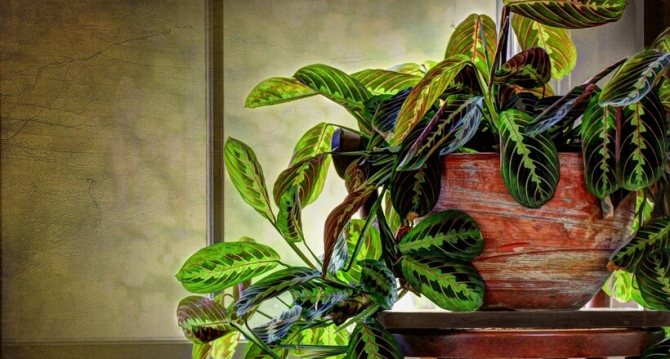

The plant is also able to positively influence the speed of learning and commercial activities. In addition, a person under his influence makes it easier to converge with others.
Rejuvenation
You can rejuvenate the plant during the next transplant if it is noticeable that the root system of the plant has grown enough. In this case, the so-called division of the bush is performed.
In this case, the plant is divided into several parts, each of which is placed in a separate container filled with a mixture of peat and river sand. After planting, the container with the flower is wrapped in polyethylene to create a greenhouse effect.
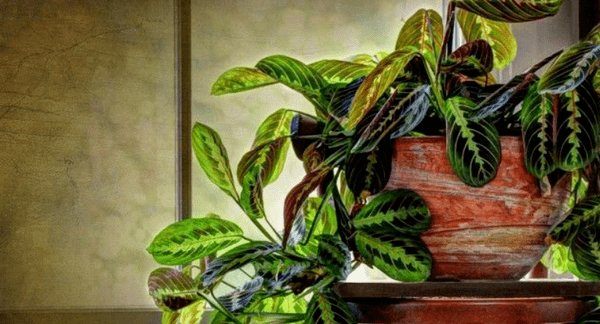

Arrowroot diseases
If you see that arrowroot leaves turn yellow, their ends are brown and dry, plant growth is slowed down, then most likely your flower does not have enough moisture and the air around the plant is too dry. It is necessary to increase the humidity of the air, spray the arrowroot more often, put the pot in wet peat or on pebbles with water in a pan.
Too dry air can lead to curling and falling of arrowroot leaves, as well as damage to the plant by spider mites. A spider mite is a very small red "spider". It appears on the underside of the leaves and envelops them with thin white cobwebs. It is destroyed by spraying and washing the leaves, especially from the underside, with water, a weak tobacco infusion with soap, pollination (in the fresh air, outside the rooms) with ground sulfur, or the plant is treated with ready-made systemic insecticides.
When processing arrowroot leaves with infusions, after 2-3 hours, the leaves must be washed with cool water. The treatment of the plant will have to be repeated several times until the pests are completely destroyed. To avoid being hit by a spider mite, the plant must be kept clean, sprayed frequently, and kept away from central heating batteries.
If the plant is kept in the cold and watered too hard, then diseases are inevitable for arrowroot. In this case, the flower will wither and rot the stems and leaves, if the conditions of detention are not changed, the arrowroot will die.
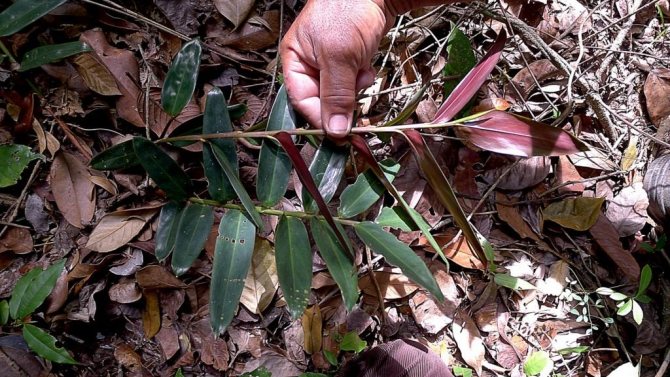

Arrowroot are demanding on the light regime. In too bright light, the leaves lose color. If direct sunlight hits the leaves, burns may occur on them. Arrowroot need diffused light. From direct sunlight, the arrowroot flower should be shaded.
Do you have arrowroot growing in your house? Share your experience of growing it in the comments to the article or on our Forum.
Origin
The perennial flowering plant Maranta or "prayer flower" has spread throughout the world from South and Central America. There, a beautiful arrowroot grows in humid and hot forests, near rivers and swamps. The plant was discovered and brought to Europe by the botanist and healer B. Maranta, whose name has now perpetuated the popular plant. The plant got its second name for an interesting feature - on a hot day, arrowroot folds the leaves in pairs, pressing them together, as if folding their hands for prayer.
Opens the foliage of the flower in the evening or in the cool. Some growers believe that the arrowroot flower in the room will save the family from quarrels and troubles, it has a beneficial effect on the emotional state of a person, calming him down.
The arrowroot genus contains about 40 plant species. One of the species is grown to obtain a special flour (arrowroot), which is used in dietary dishes.
Homeland of the plant
Transfer
Young specimens of arrowroot need a transplant every year, and adults every 3-4 years. It is better to do this after pruning, when all the shoots are cut. It is necessary to take a pot for arrowroot, plastic or clay, covered with glaze, 2-3 cm larger than the previous one. Drainage in the form of pebbles or expanded clay, as well as holes for water drainage are required.
Bushes bought at the store must be transplanted without fail, regardless of the time of year. The substrate in which they are stored is only suitable for temporary stays on counters and transportation. The plant will not grow and develop in it.
The soil for arrowroot should be loose, soft and light. You can buy ready-made soil for arrowroot in the store, or you can prepare the soil mixture yourself. To do this, use the following ingredients:
- 3 pieces of leafy land;
- 1.5 parts of peat;
- 1 part of coniferous land, sand and dry mullein;
- 0.3 parts of ash.
It might be interesting: Aglaonema - home care
The transplant is carried out by transferring an earthen lump from one pot to another. For fast rooting and moisture retention, the pot can be temporarily covered with plastic. In the first month after transplanting arrowroot, you do not need to fertilize.
Does arrowroot bloom and how?
In its natural environment, arrowroot blooms annually in spring and summer. However, it is quite difficult to achieve this at home - the buds appear only with the ideal plant content.
Arrowroot bloom is abundant and lasts for 2-3 months. At the same time, arrows appear alternately, on which small white, pinkish or pale yellow buds are collected in a small spikelet. However, they are not particularly decorative.
